Systems Integration Solutions LLC is a Lithuania-based company specializing in innovative technical solutions in information technology. SIS is working with the EBSI blockchain infrastructure to create EIF, European Identification Framework.
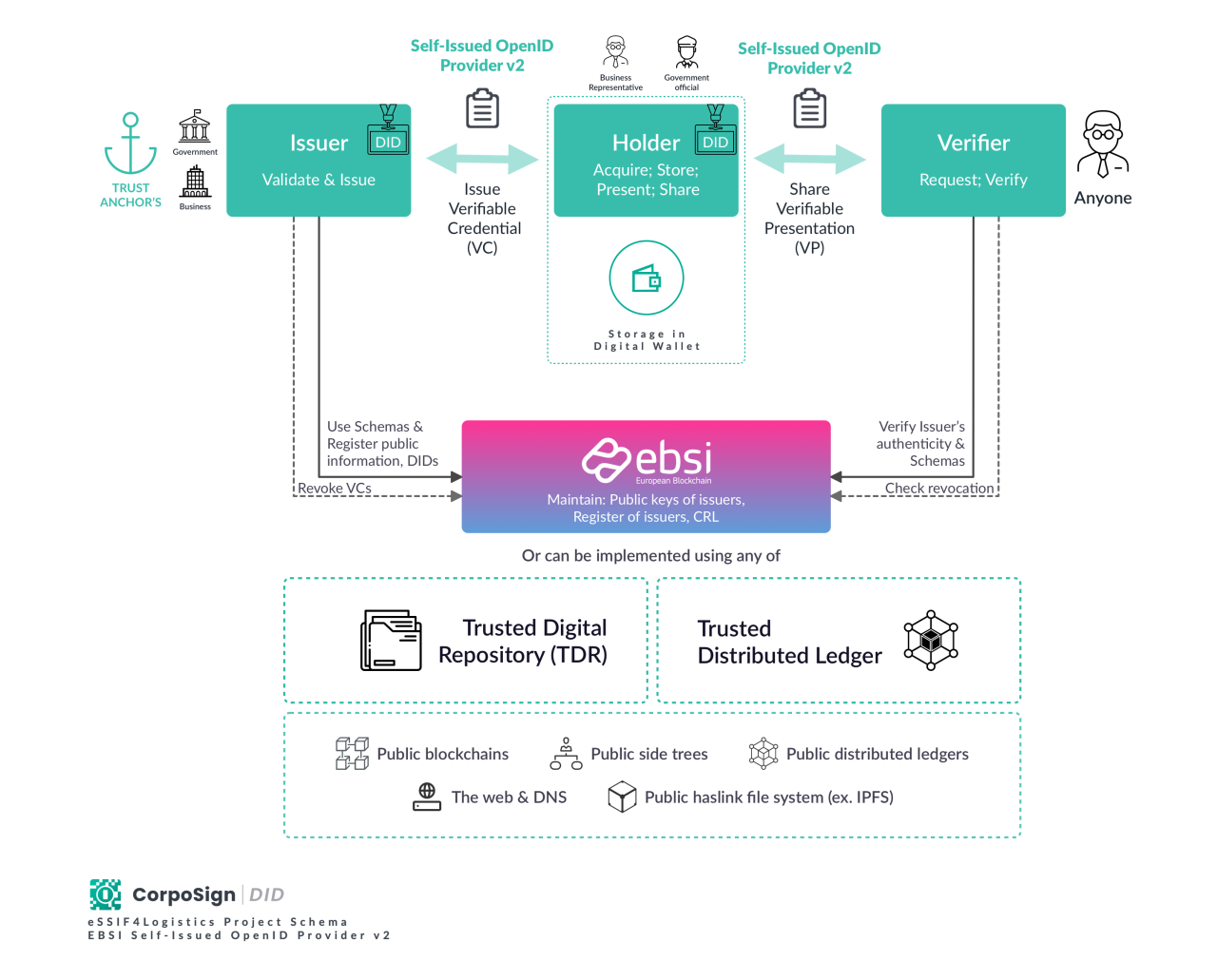
In the early months of 2018, the EU and the Member States concluded that blockchain technologies offer too many advantages to be ignored by the public sector. From superior capabilities of guaranteeing privacy to robust security, this cutting-edge technology had answers to some of the most pressing concerns regarding public data collecting and processing.
Several months later, the member states of the European Union, Norway, and Liechtenstein set off the EBP – European Blockchain Partnership. The main goal of this project was to create a well-structured European blockchain infrastructure that could be used to cater to commercial needs and purposes.
Merely a year later, European Blockchain Partnership recognized several use cases for blockchain technology in the public sector.
European Self-Sovereign Identity Framework (ESSIF) was meant to enable people to control digital identities and securely authenticate to government and corporate websites; the possibility of issuing digital diplomas would significantly reduce the costs of verification; automated notarization could improve data integrity by integrating digital audit trails, and more.
Systems Integration Solutions, UAB, an SSI and EBSI expert, as well as the leading Lithuanian information technology company was tasked with creating a comprehensive solution that would encompass the aforementioned use cases and blockchain benefits, and thus CorpoSign DID was born.
System Integration Solutions set out to create a special SSI solution in the field of e-Government that would empower government organizations and corporations residing in the cross-border logistics ecosystem to “authorize their representatives in order to perform appropriate actions on behalf of the organization using an ecosystem-specific scheme.”
The company’s spokesperson spoke about CorpoSign DID, its use cases, and how it was meant to reshape the landscape of technology European governments can leverage to ensure more efficient and secure data handling.
CorpoSign DID is a “blockchain-agnostic, decentralized digital identification platform.” It is comprised of three separate products, including CorpoSign DID Issuer, Wallet, and Verify.
“CorpoSign DID is a decentralized identity framework that uses blockchain and cryptographic technology to easily identify and connect people with government, businesses, data, and services. Verifiable credentials based on EBSI & W3C standards are interoperable all over the world and, like private letters, may transmit any form of document or data in a substantially more sophisticated and secure manner,” said System Integration Solutions’ spokesperson.
The CorpoSign DID advantage lies in the streamlined process of simultaneous login, authentication, and KYC (know your customer). This innovative solution enables CorpoSign users to control how their data is used, processed, and collected. CorpoSign’s decentralized identity makes it a “self-sovereign, privacy-preserving, and user-friendly” software that anyone can use and benefit from.
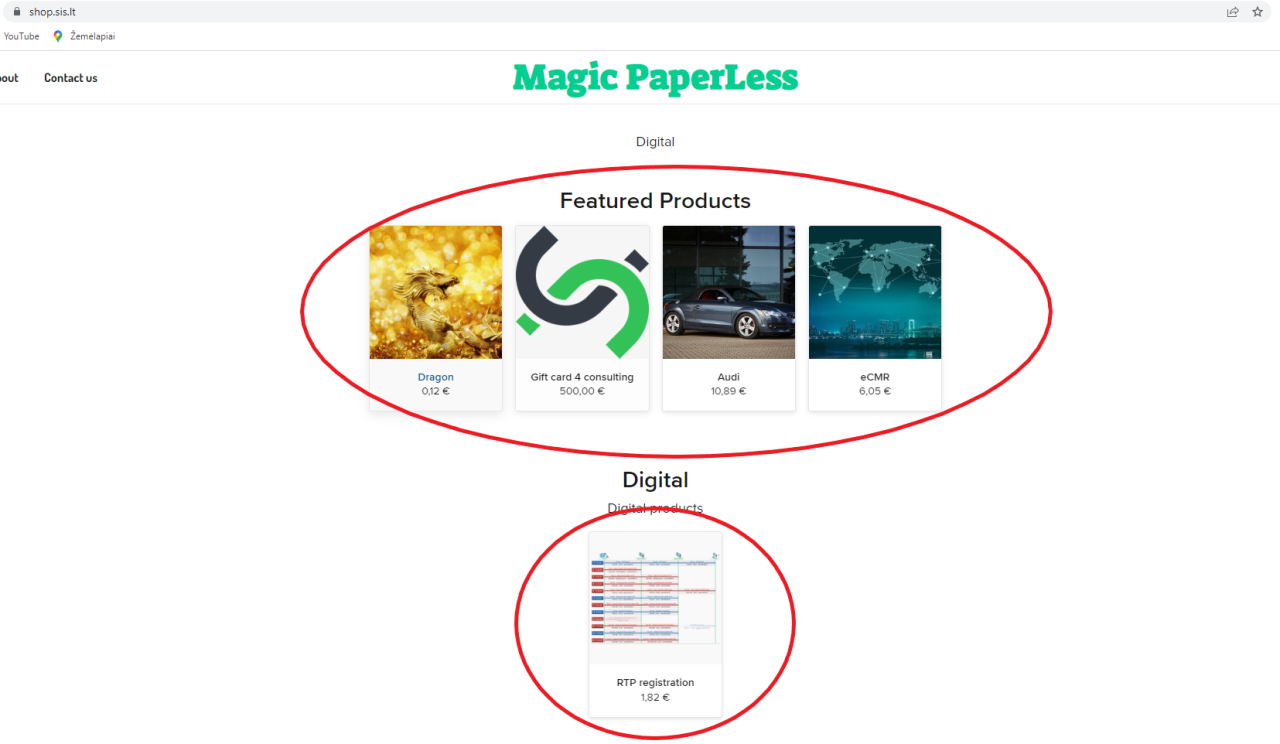
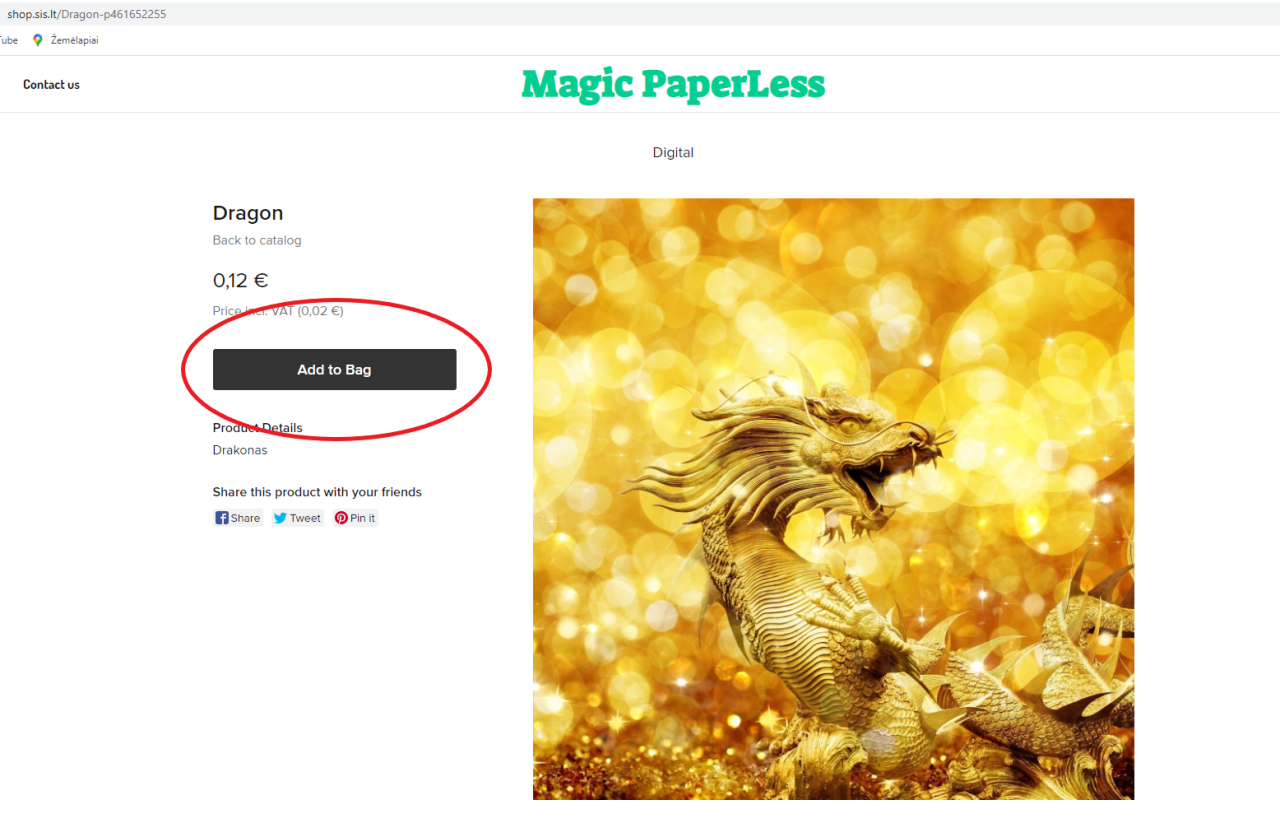

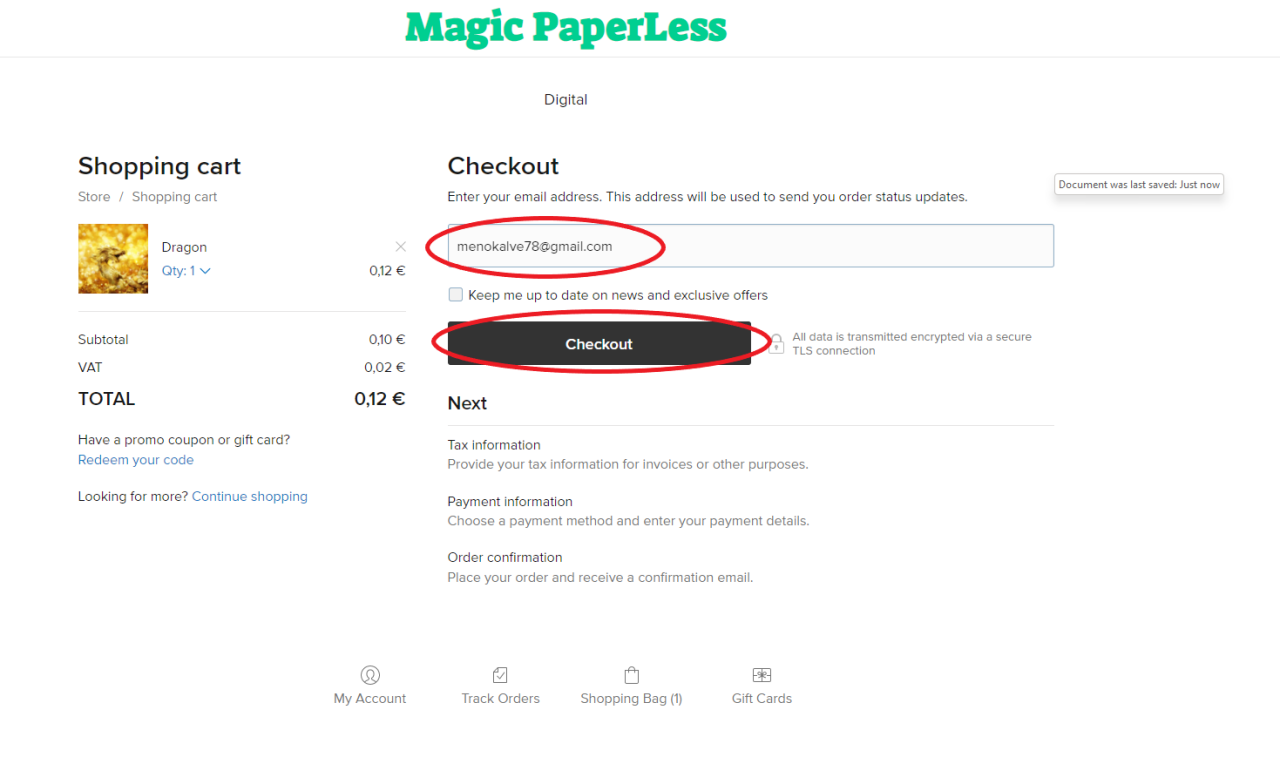
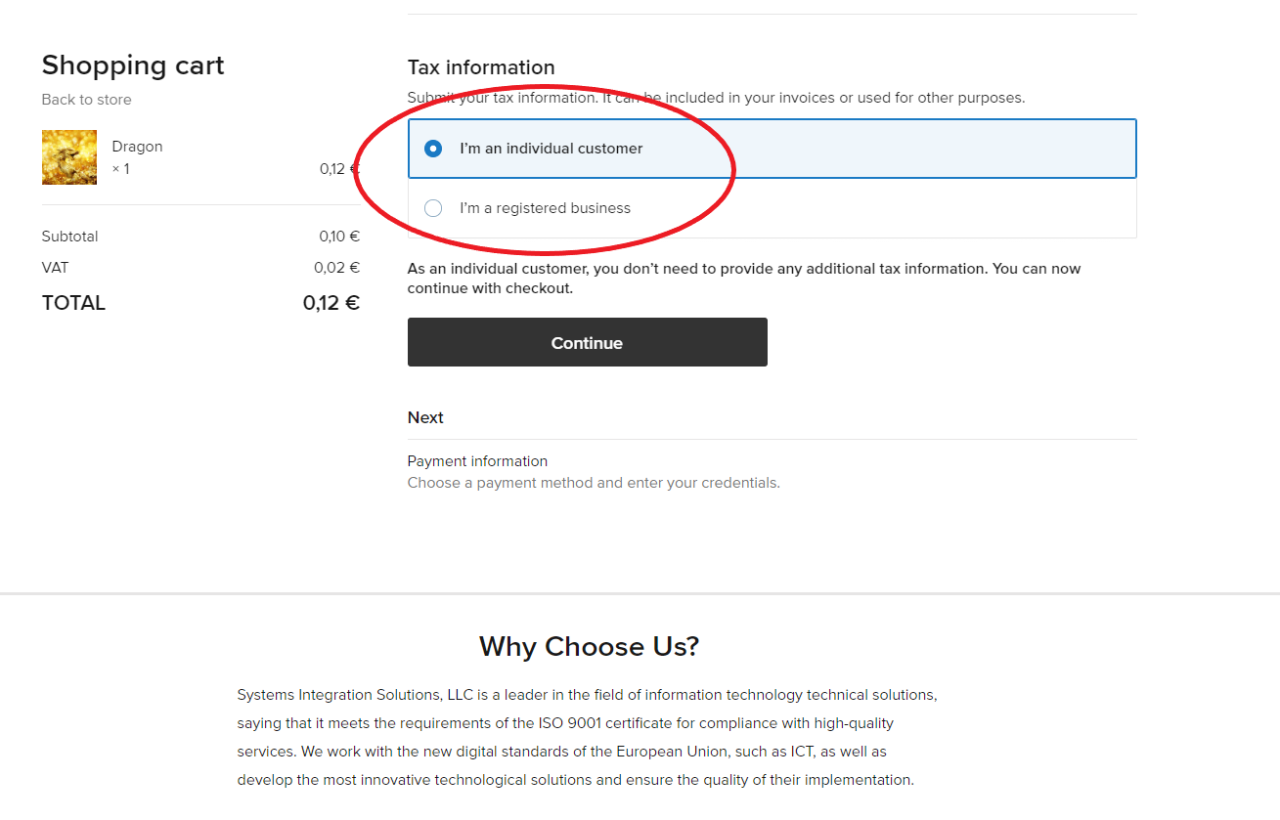
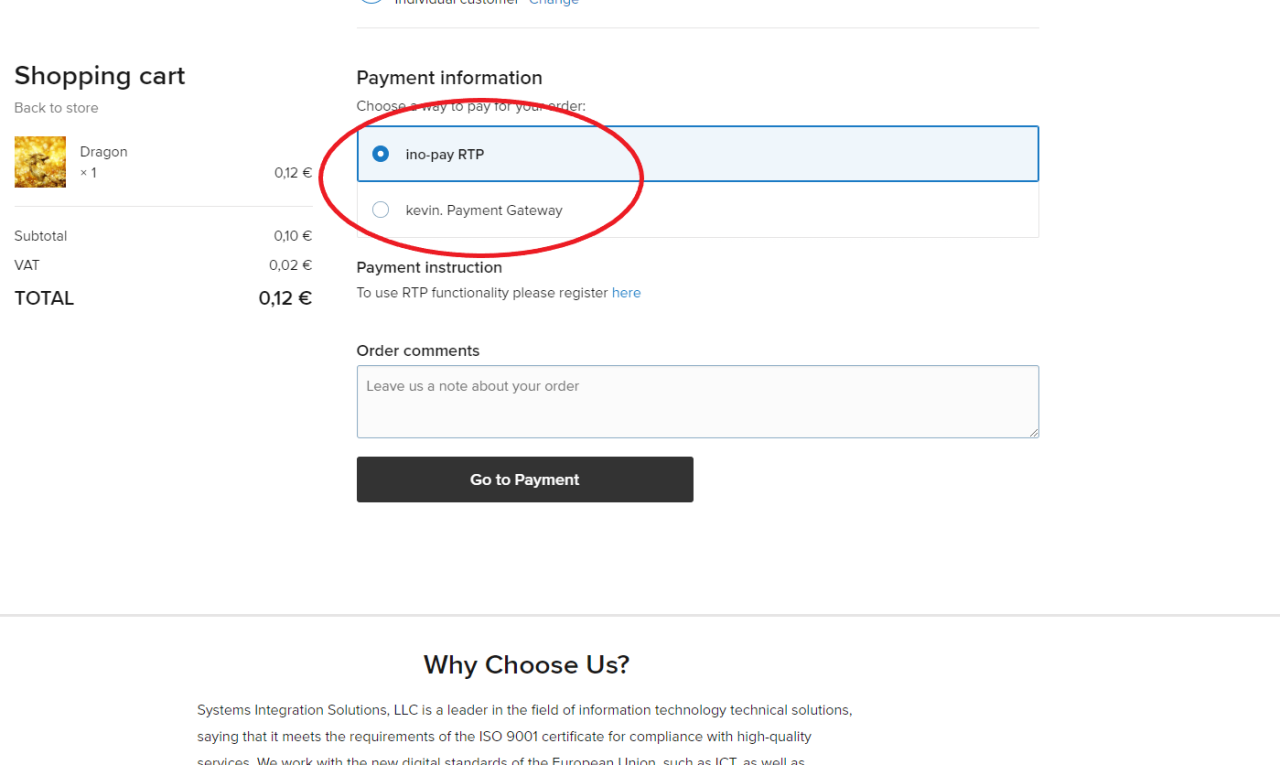
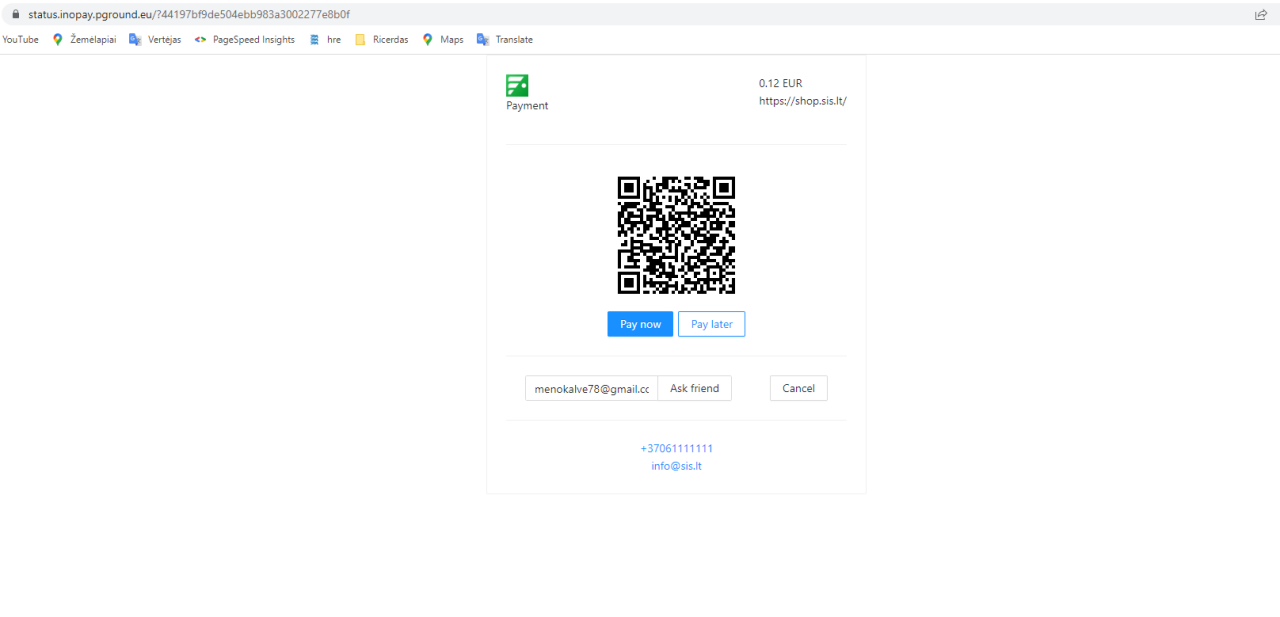
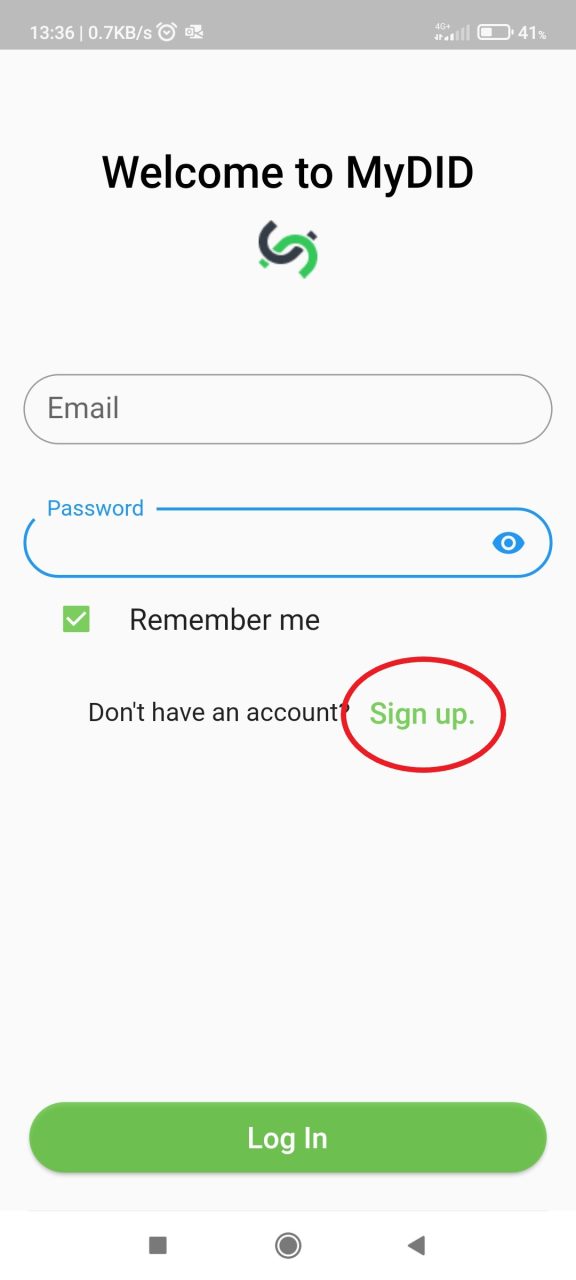
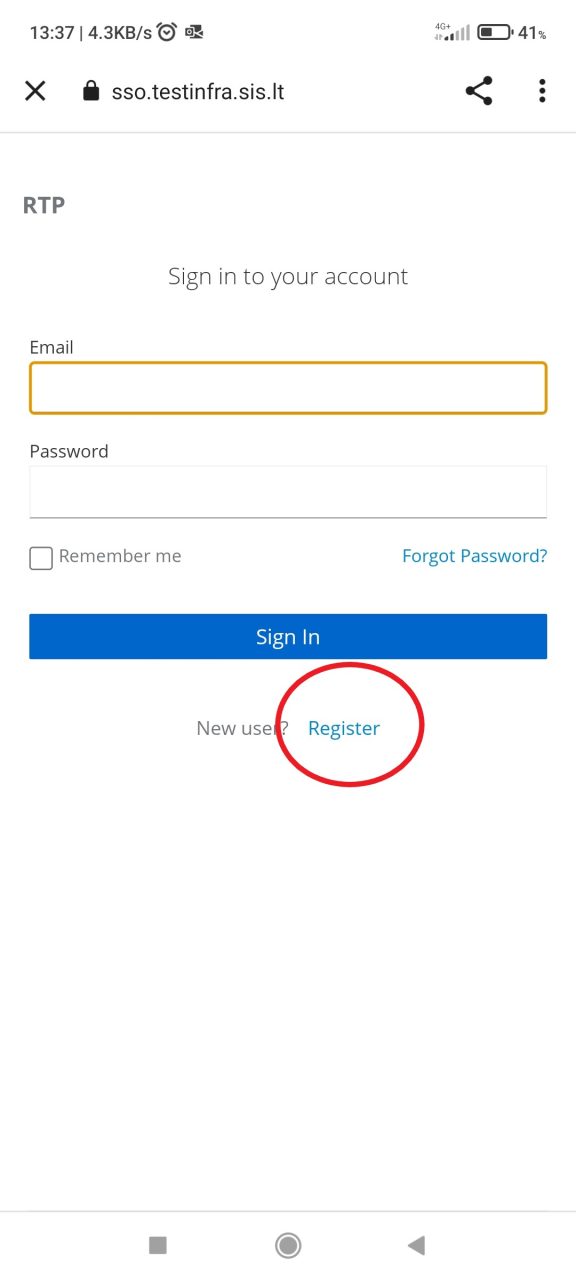
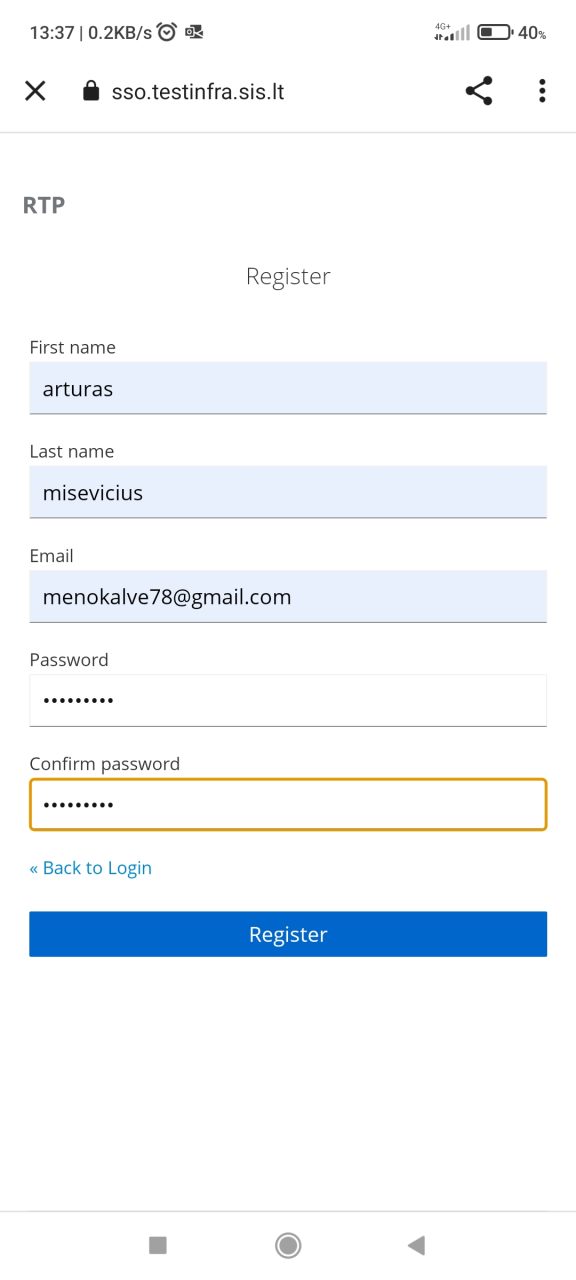
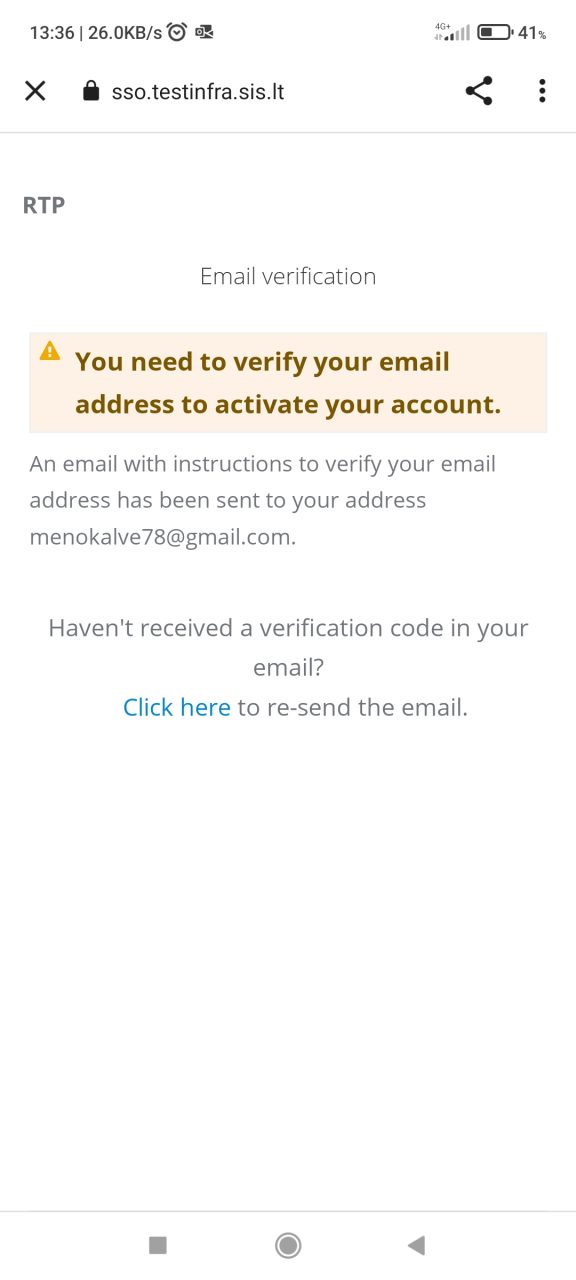
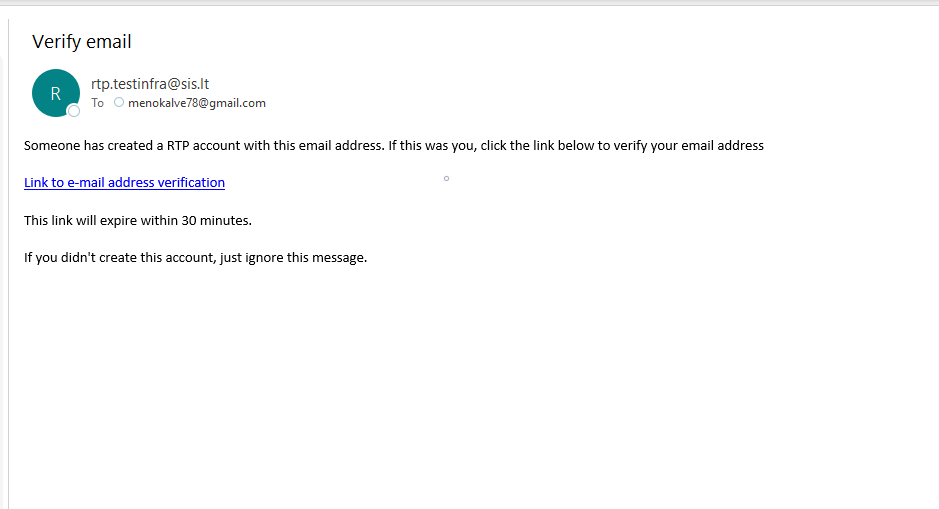
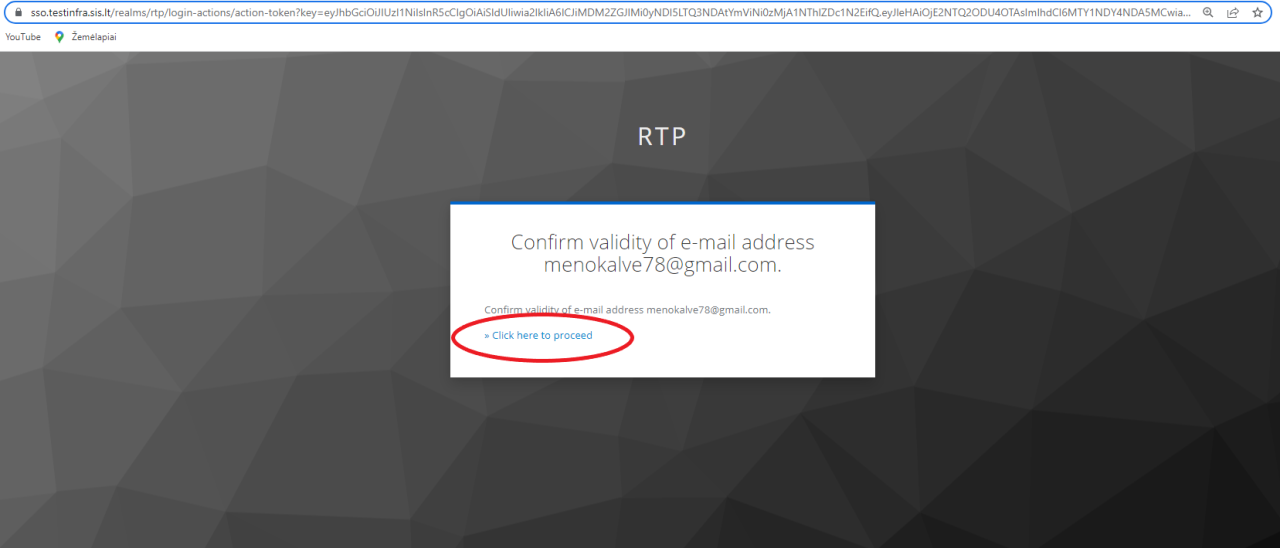
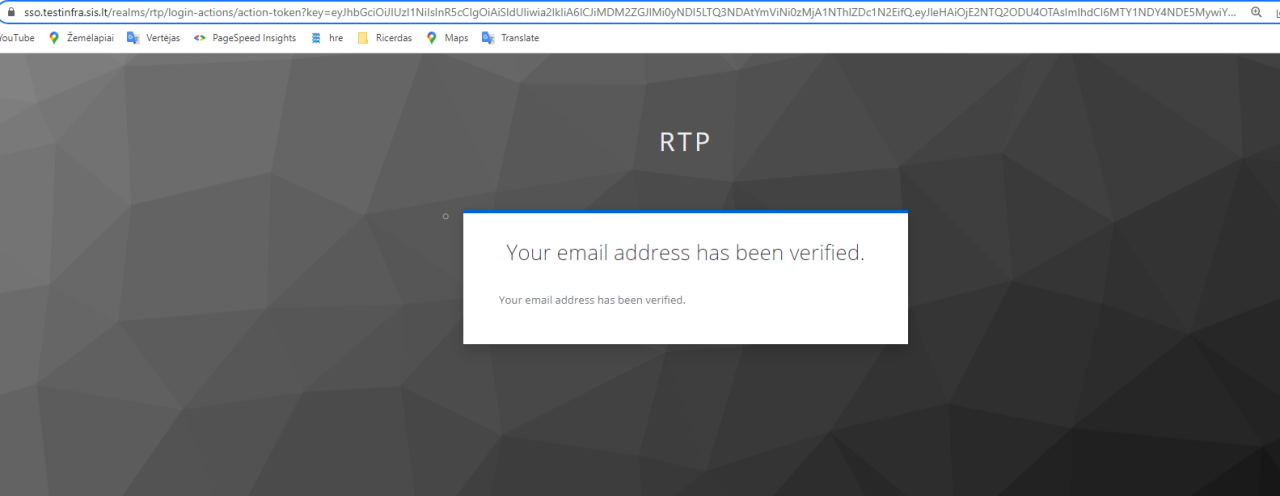
Now you have account in RTP realm . https://access.ino-pay.com/realms/rtp/account/#/

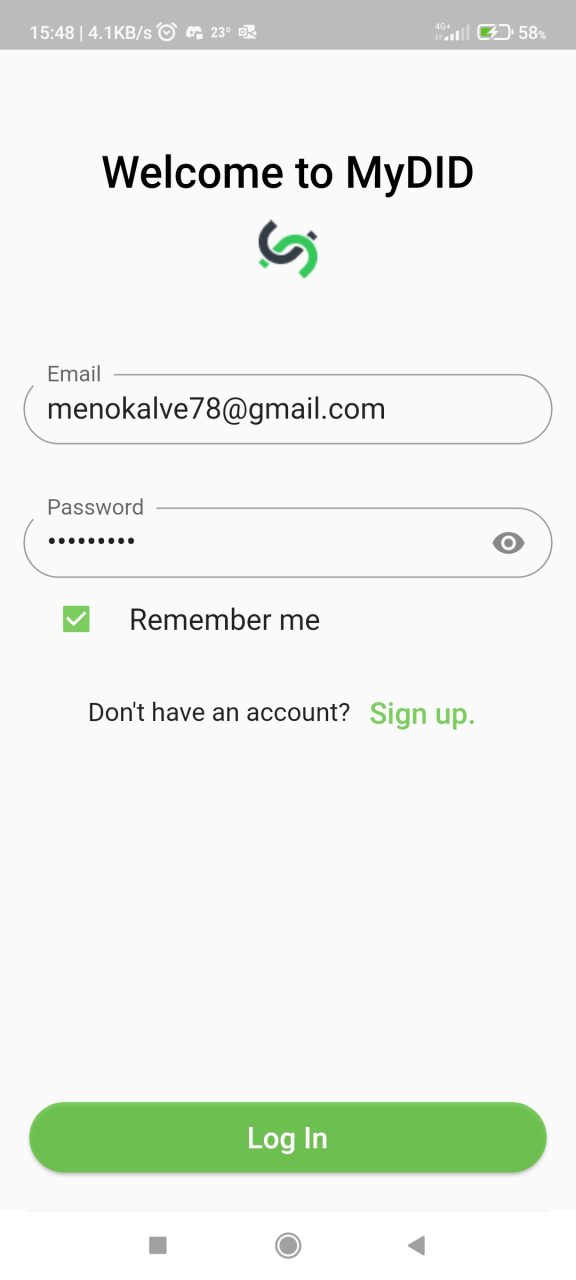
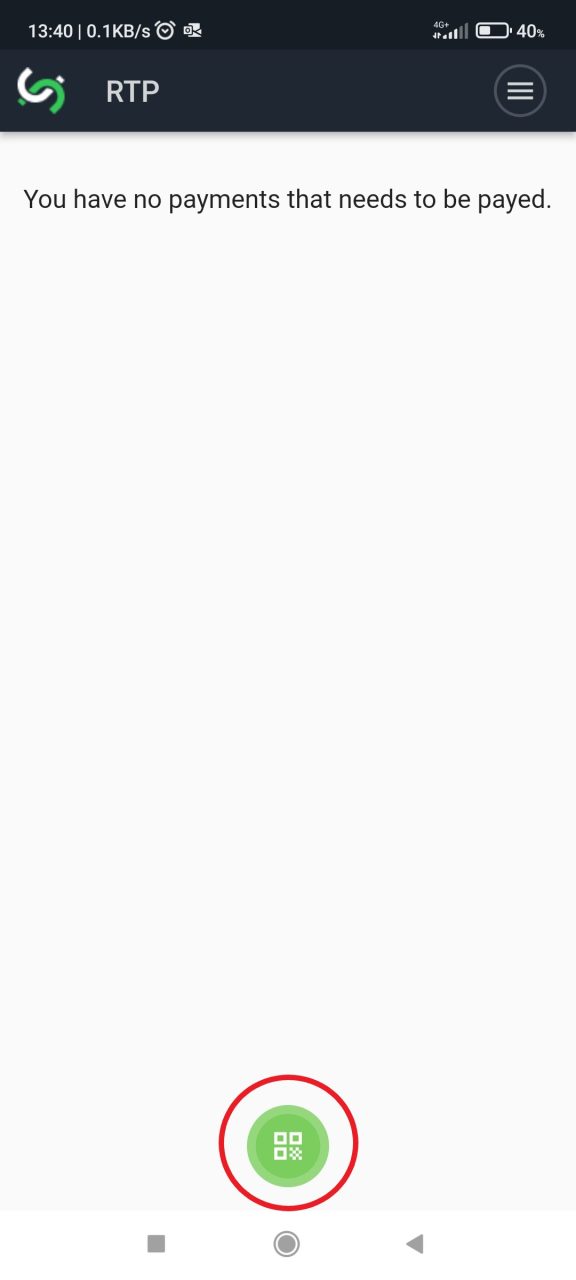
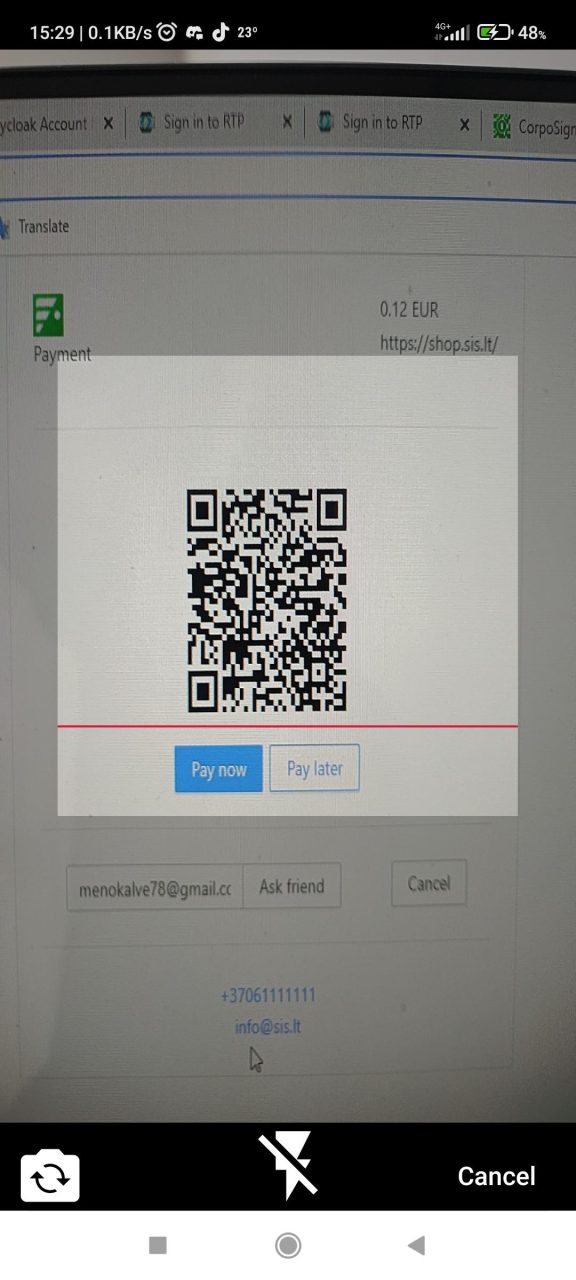
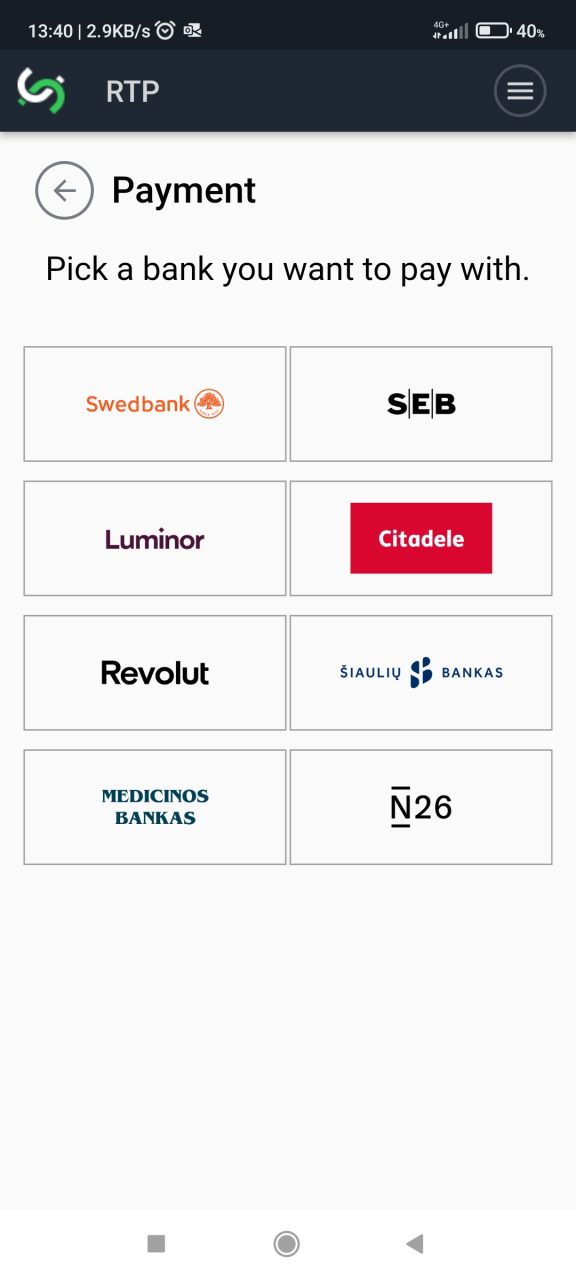
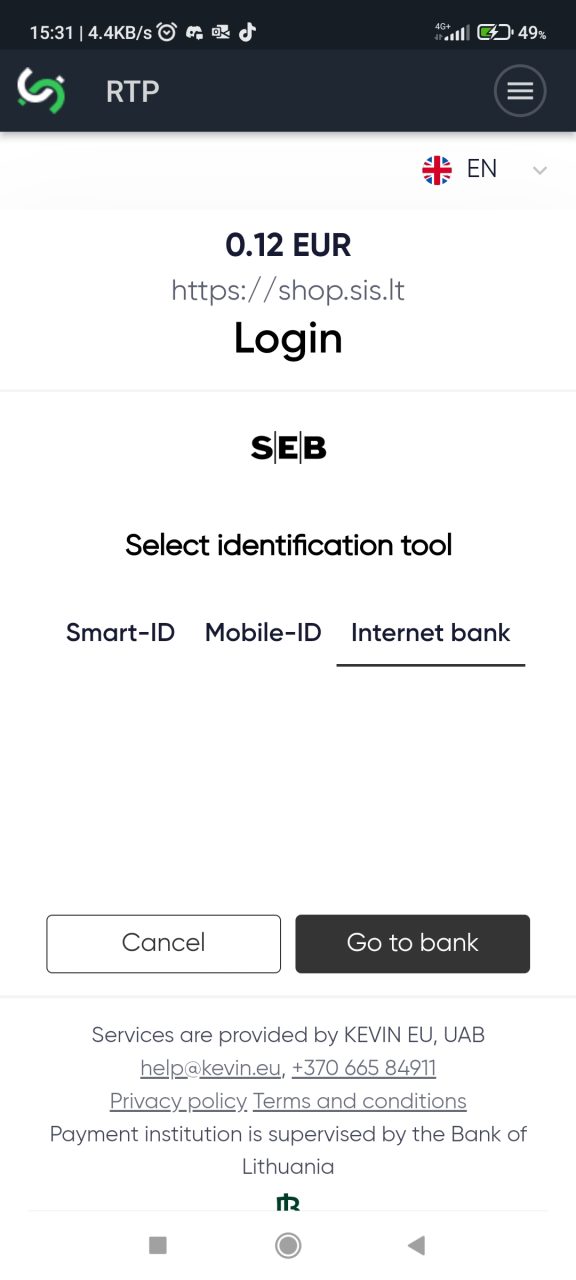
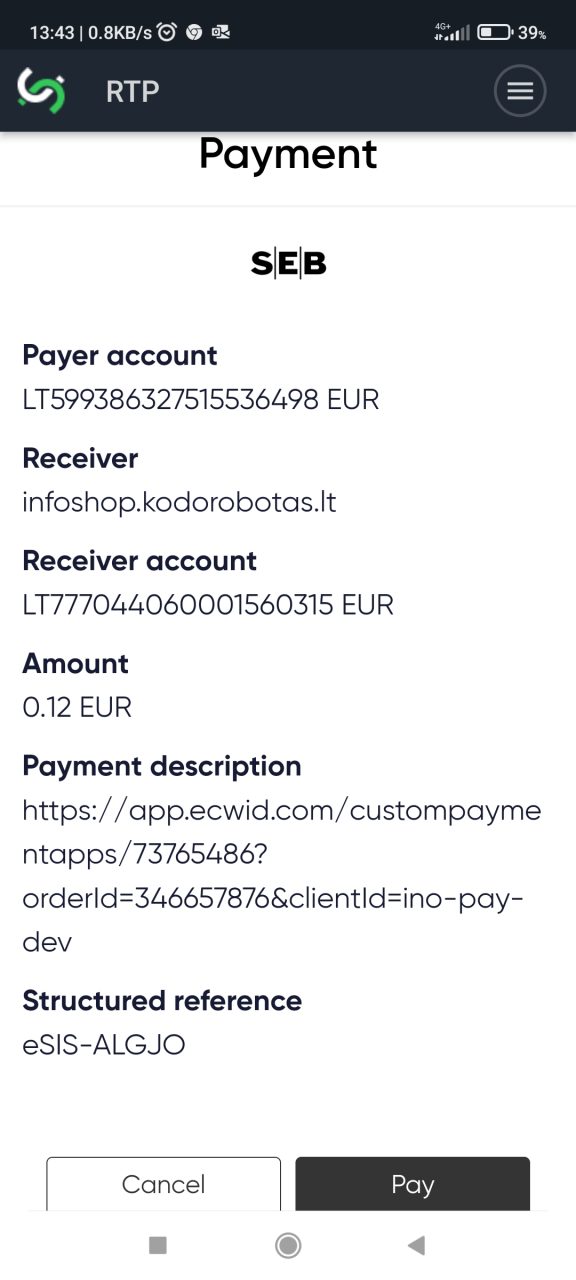

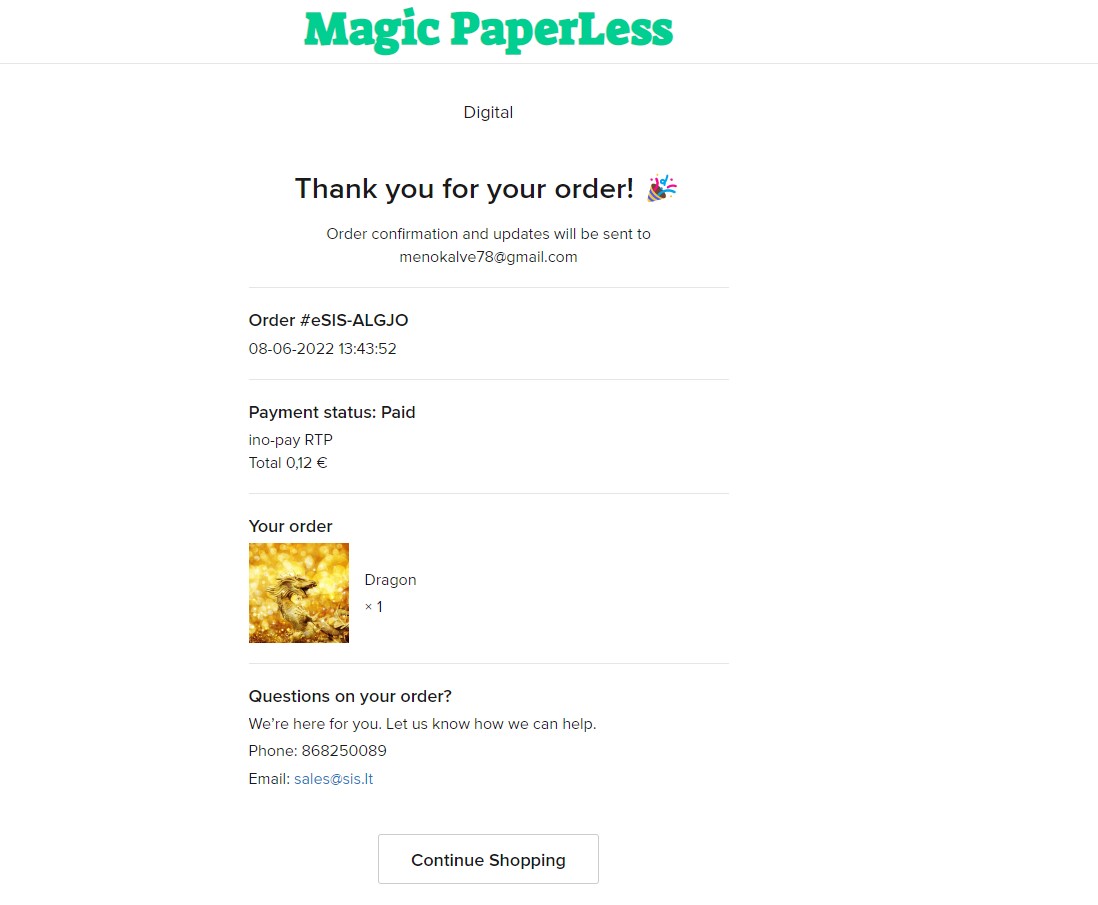
e) and receive an email confirmation:
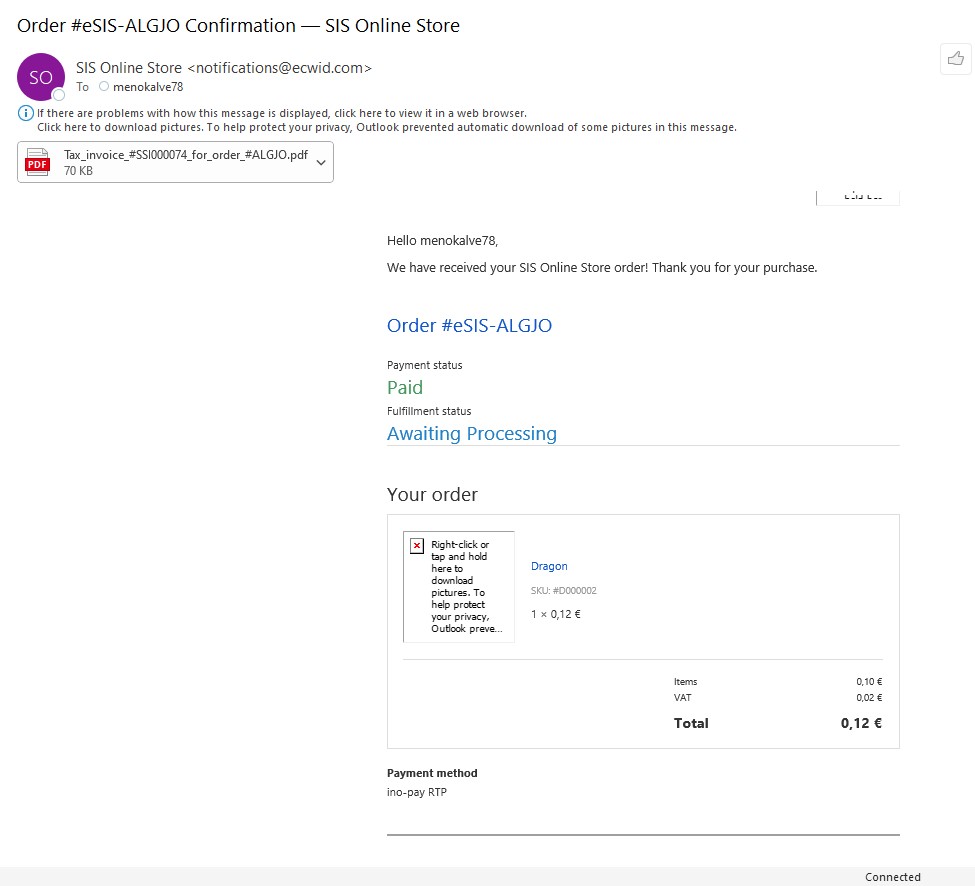
eFTI platform concept scheme:
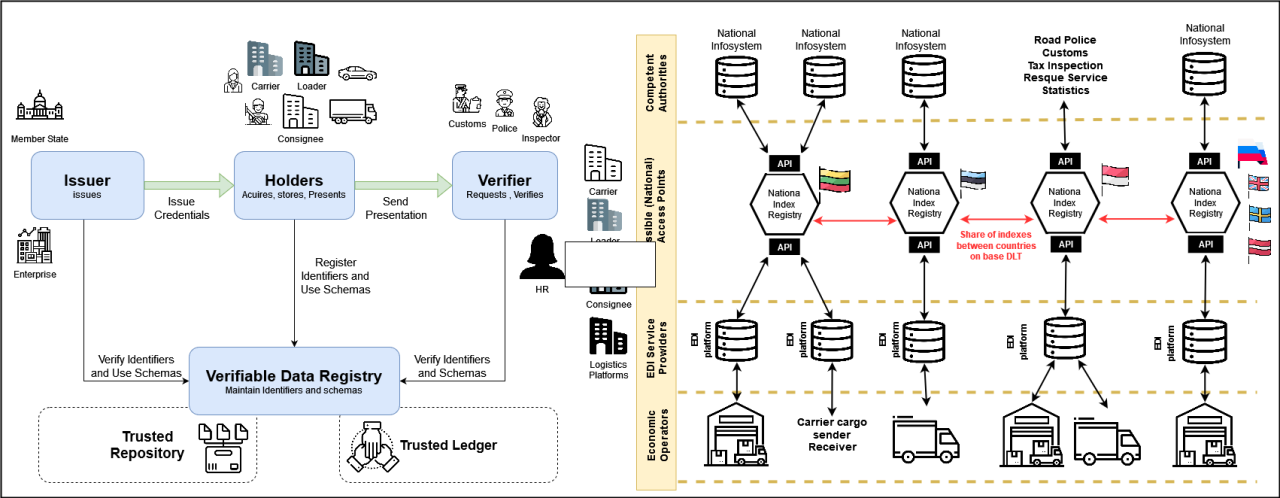
Summary
Goal: Electronic document eCMR, creating, editing and tracking .
Prerequisites:
| LT GUI | https://app.index.sis.lt/ |
| SSO LT | https://sso.playground.ecmr4.eu/auth/realms/lt |
| realm admin | [email protected] |
| realm ecmr admin console | https://sso.playground.ecmr4.eu/auth/admin/master/console |
SSO users:
| Arturas Misevicius ID | 0de1cea2-037e-4361-83d5-b973e85566b7 |
| Risardas Bedulskis ID | 865f75c7-ad1f-434d-80f3-3161fe1bb6a8 |
| Government | test |
| name | LT government |
| Groups | government/customs |
| u: | [email protected] |
| p: | password |
| id: | dd1bbedc-f9f4-4c79-a98d-b326d3885c23 |
| Business | test |
| name | LT business |
| Groups | Business/Business Company LT |
| u: | [email protected] |
| p: | password |
| id: | 9e4ba04b-d01d-4ee6-a16e-e5726164db71 |
Input data
| Input title | Value (example) |
| eCMR ID | ecmrVKT |
| Invoice ID | invoiceVKT |
| Permitz ID | permitzVKT |
| Country Code | "LT" |
| ISO 6523 ICD | "200" |
| Register Code | "123456789" |
| Document (pdf) | document pdf |
| Has access | Manage users access by user ID |
| Transport reg. Nr. | "LSI913" |
| Transport category | "Truck" |
| Transport Country code | "LT" |
Login to https://ecmr.dev.cloud.chainrecord.net/login
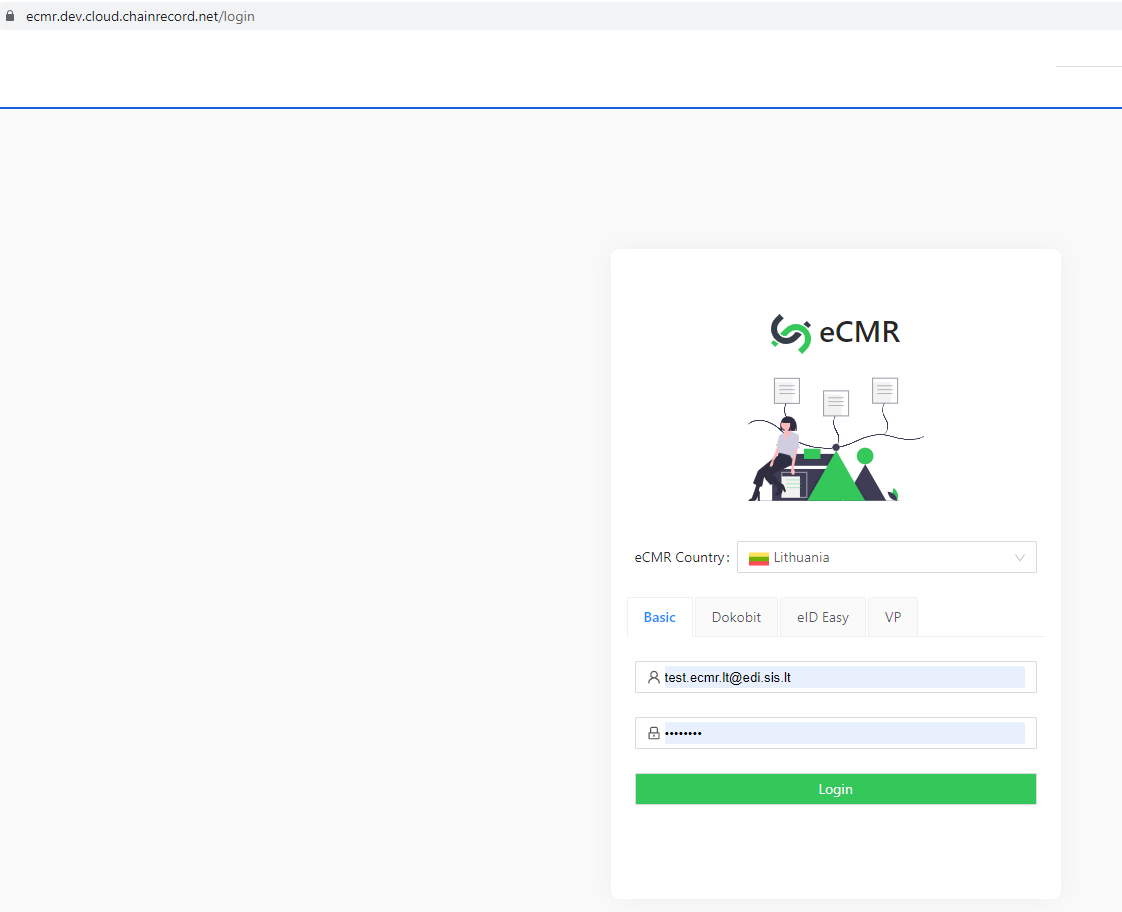
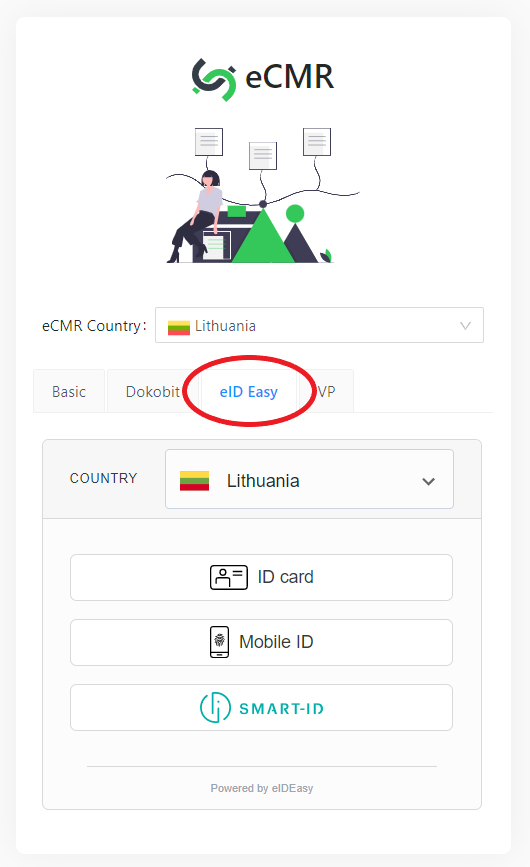
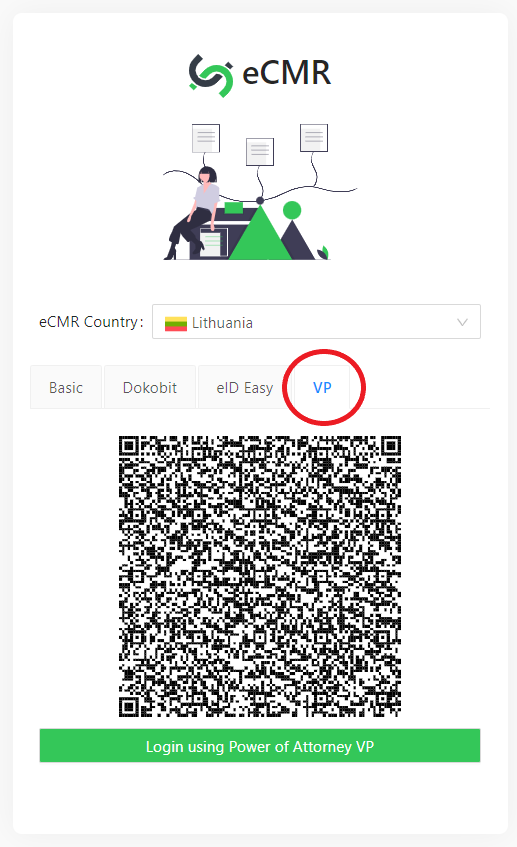
Regarding MyDID manual : https://sis.lt/mydid-manual-for-users/
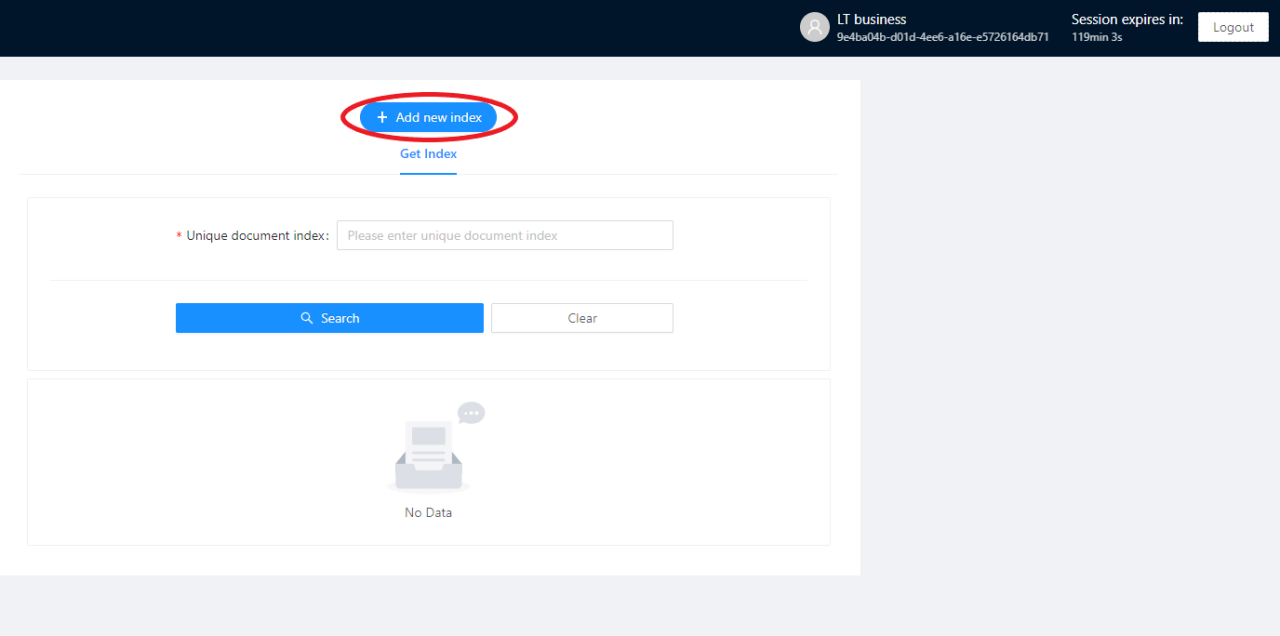

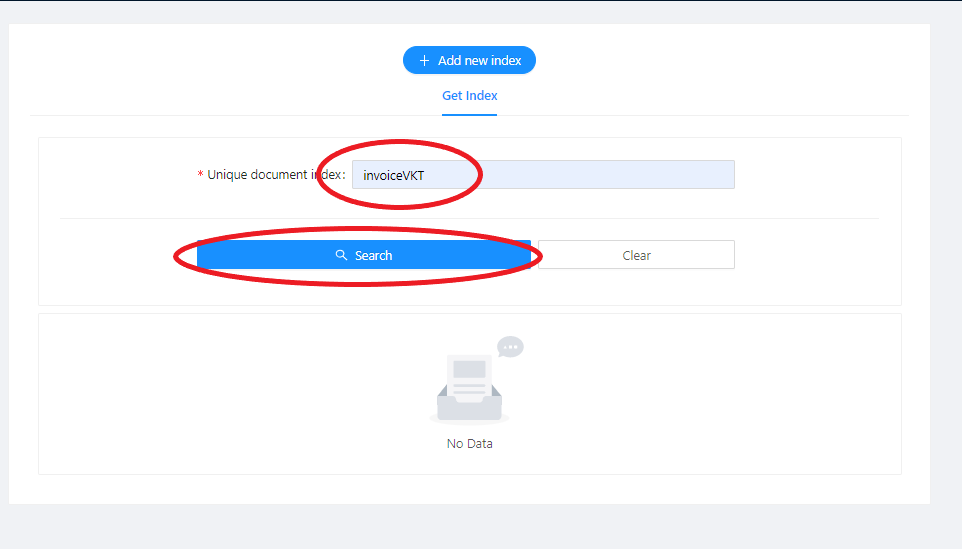
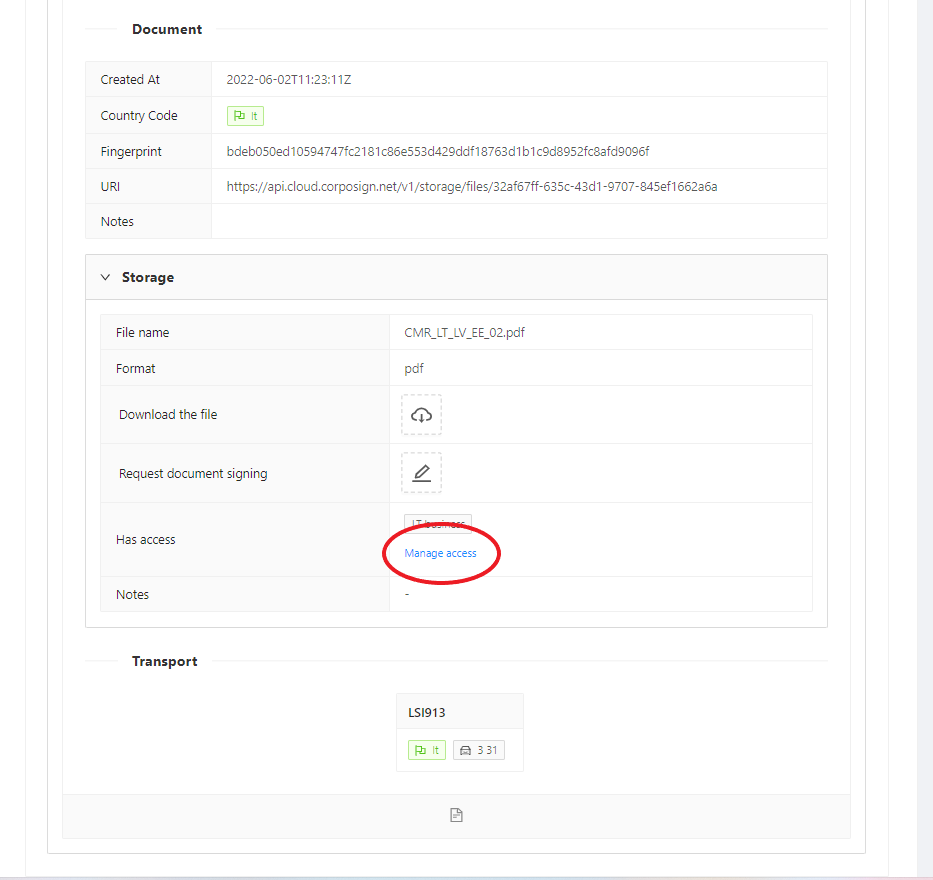
A window to manage access will appear. Click add permissions:
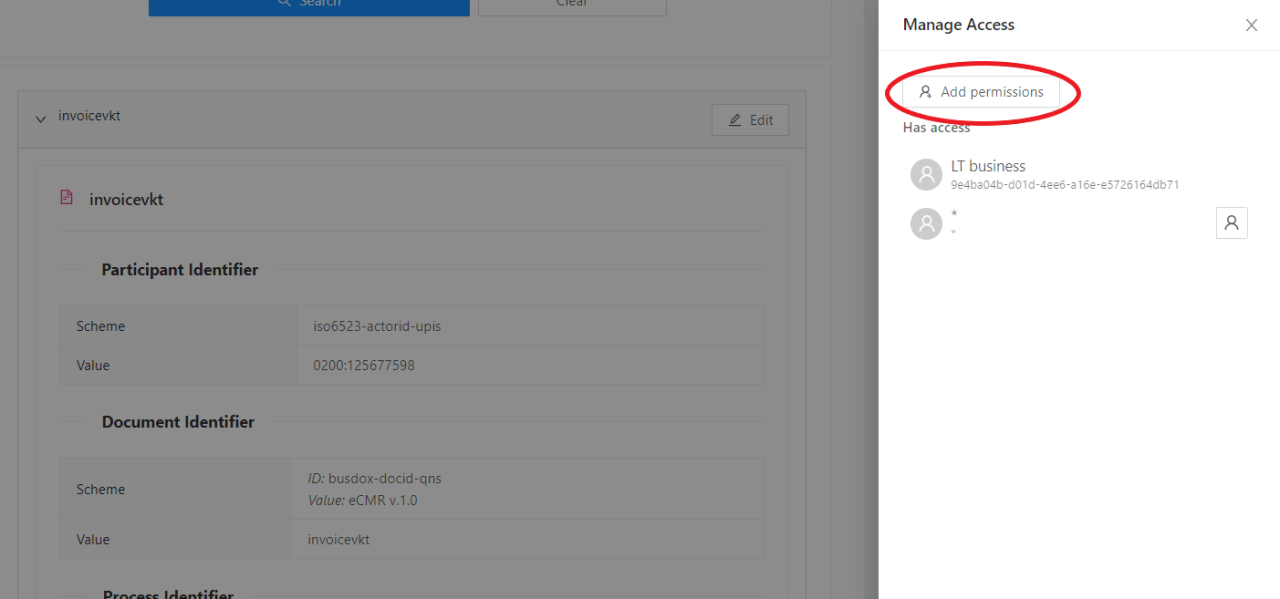
You can add permissions by user-id, for all (*), or according to your preference.
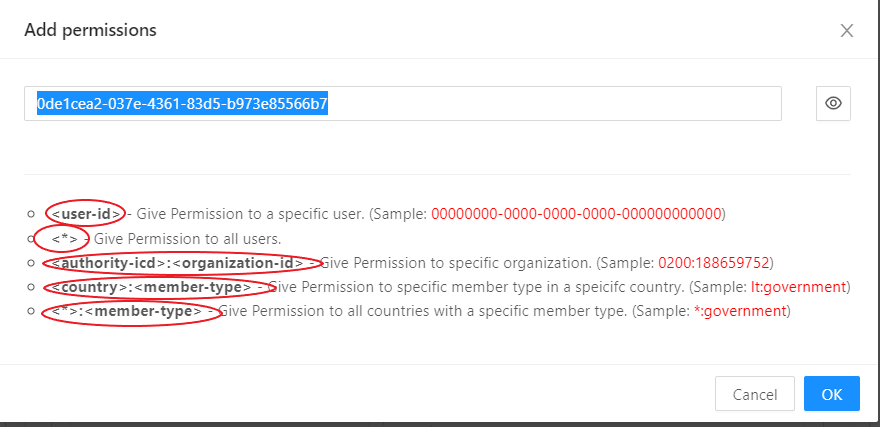
After that, you'll be able to check who has access.
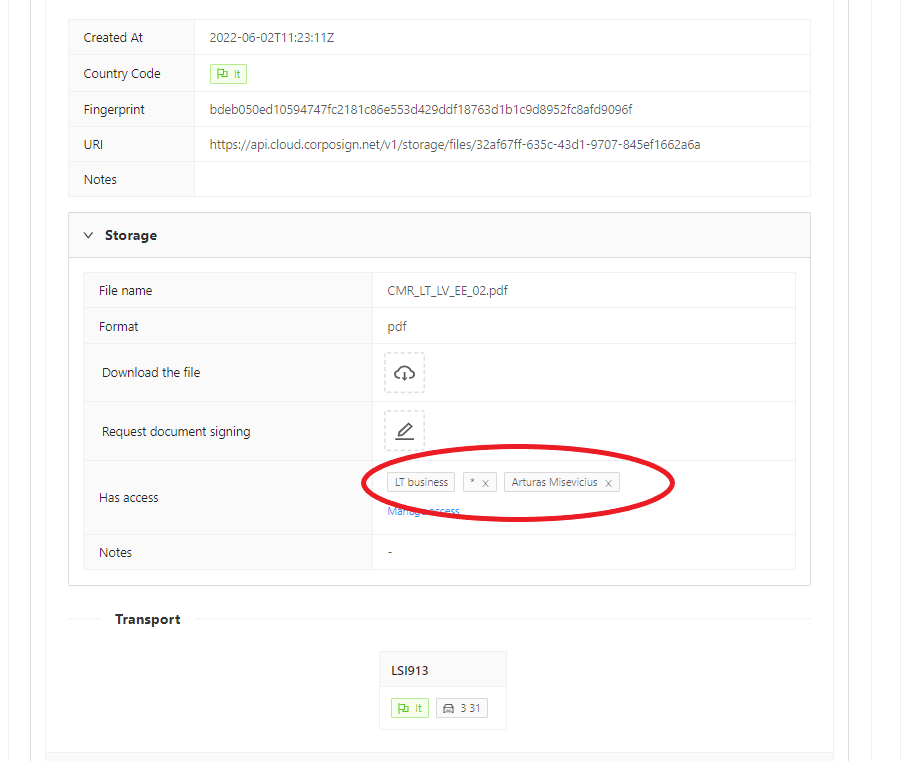

Contact your administrator to obtain user logins.
push onboard with captha:

go to Mobile Wallet:

then we get QR code:

Next, open the CorpoSign DID app on your phone and go to New Wallet:
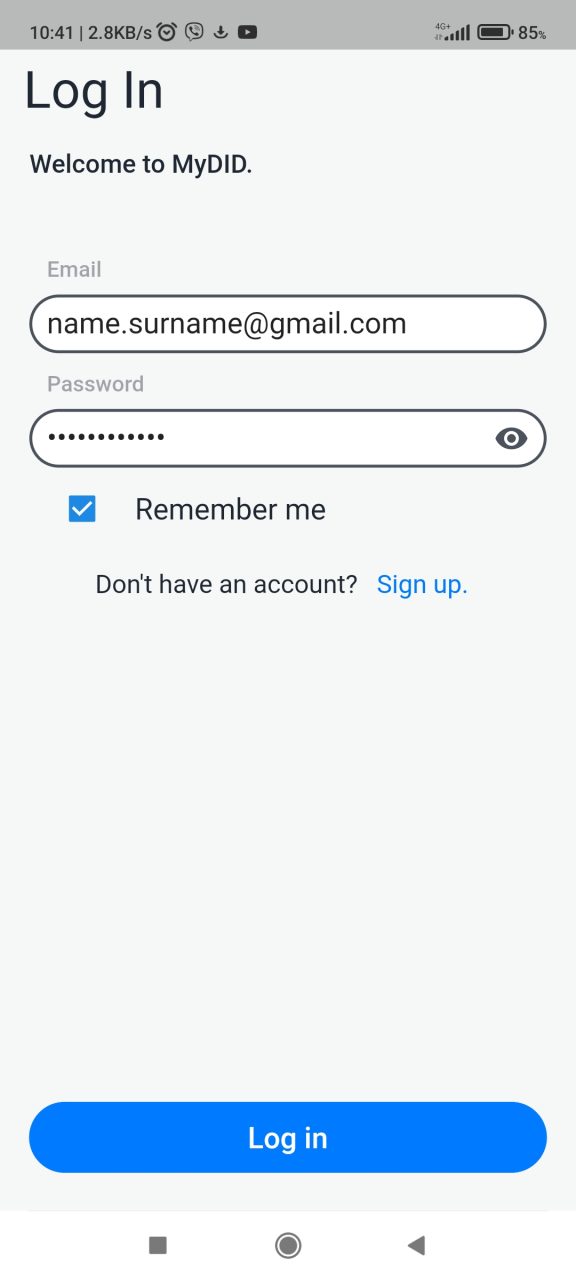
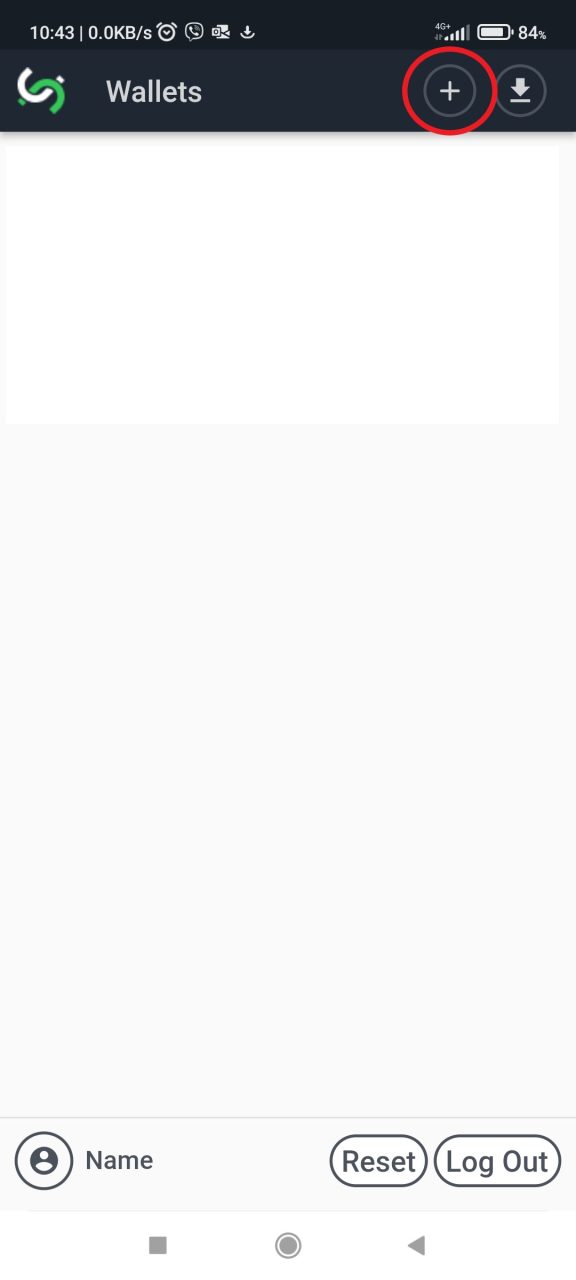
Write Wallet Name and Create New Wallet.
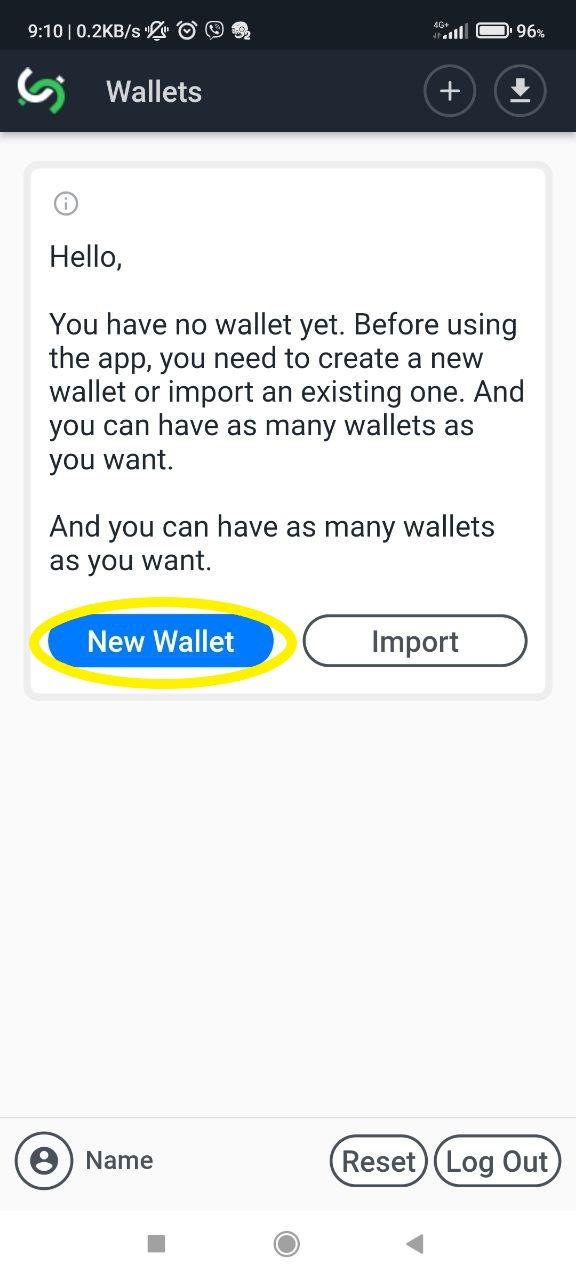
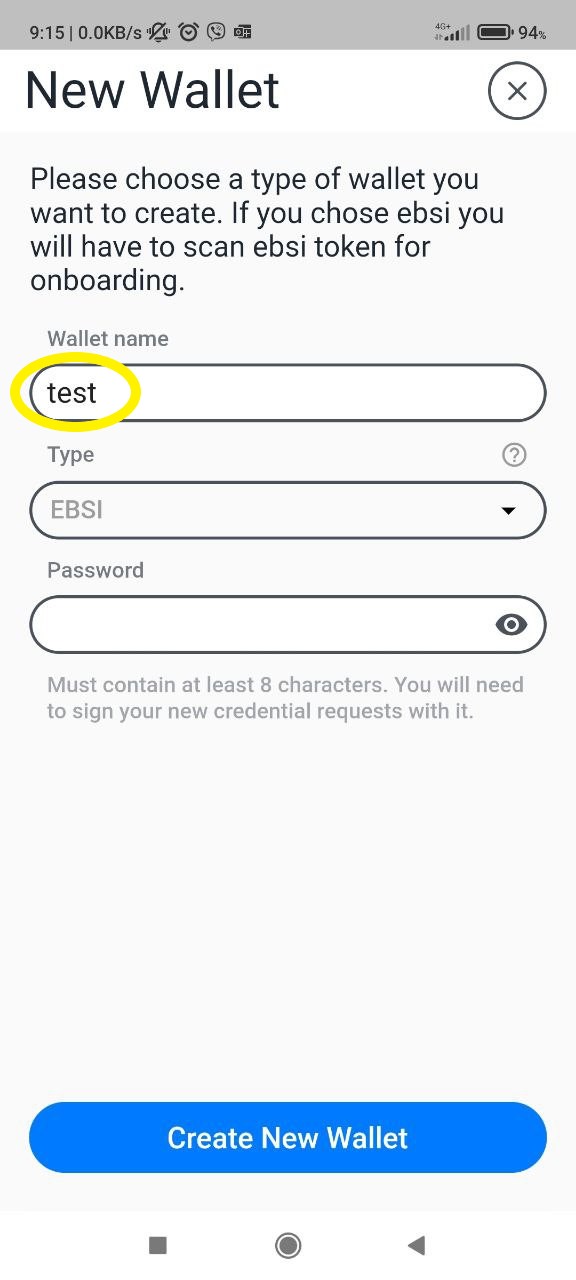

We provide access to these credential type to people who have a wallet:
Go to Link, select the credential you require, and click Generate:
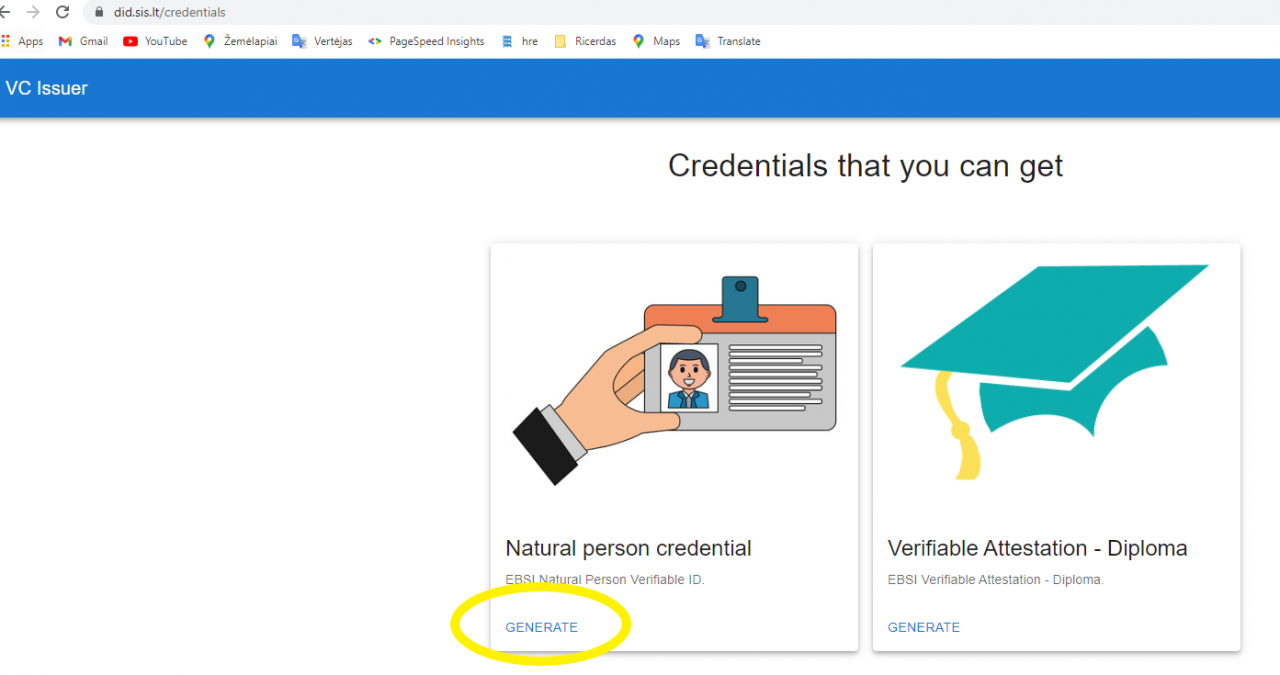
Choice enwidece type and click NEXT:

a) eID evidence

b) internal evidence type
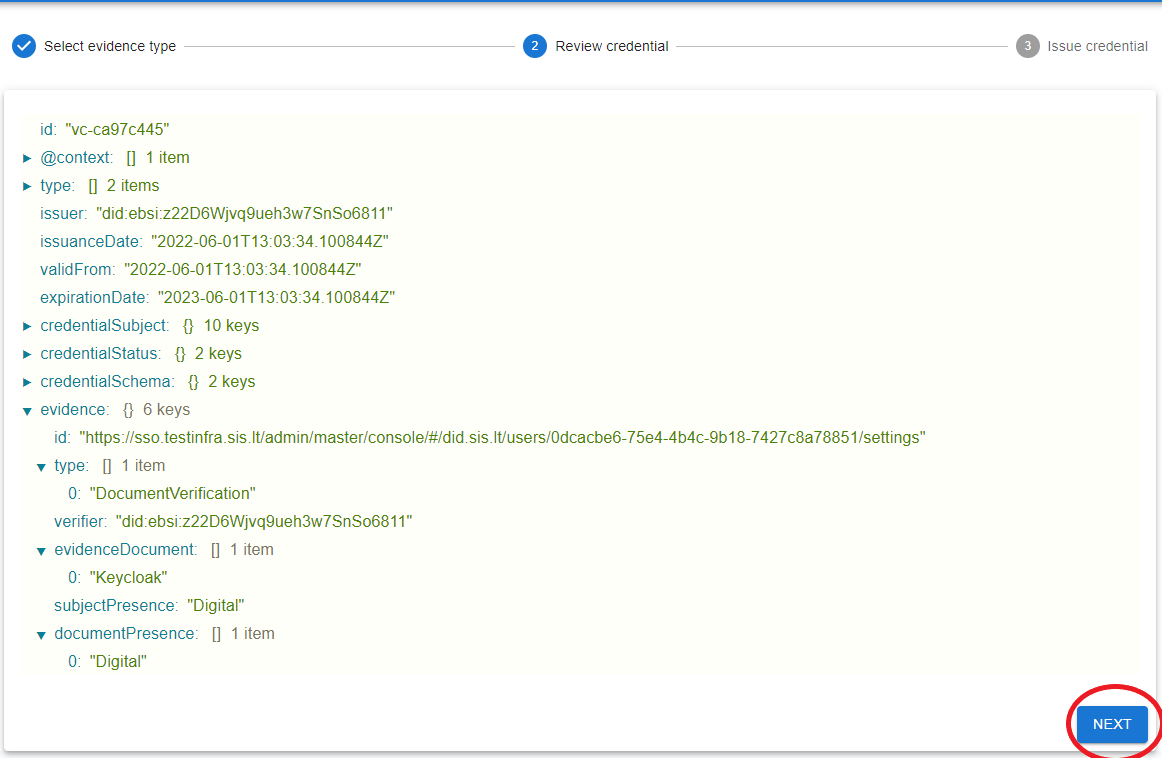
Get QR code:

Go to your phone's CorpoSign DID app wallet and tap the QR scanner button.
The credential will be created after you receive notified to accept it. :
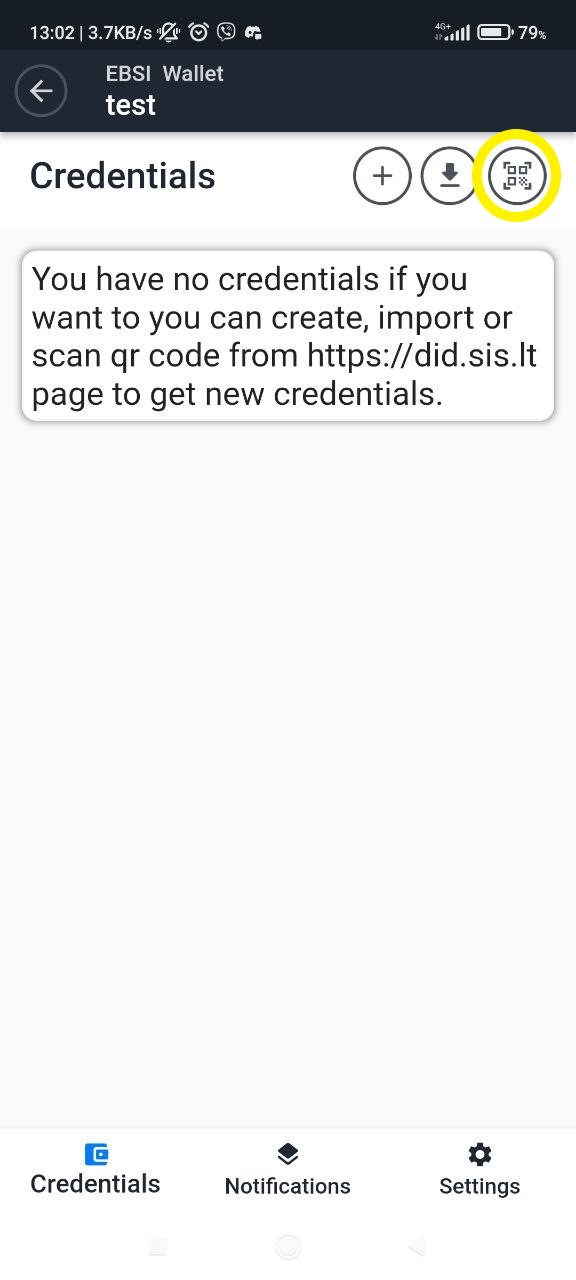
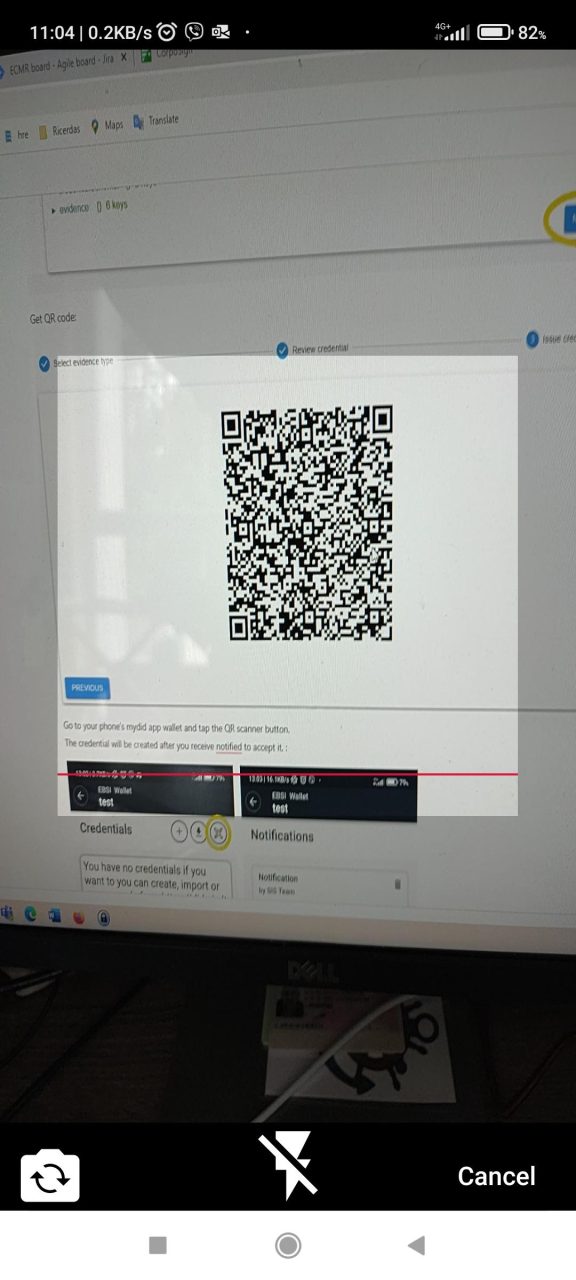
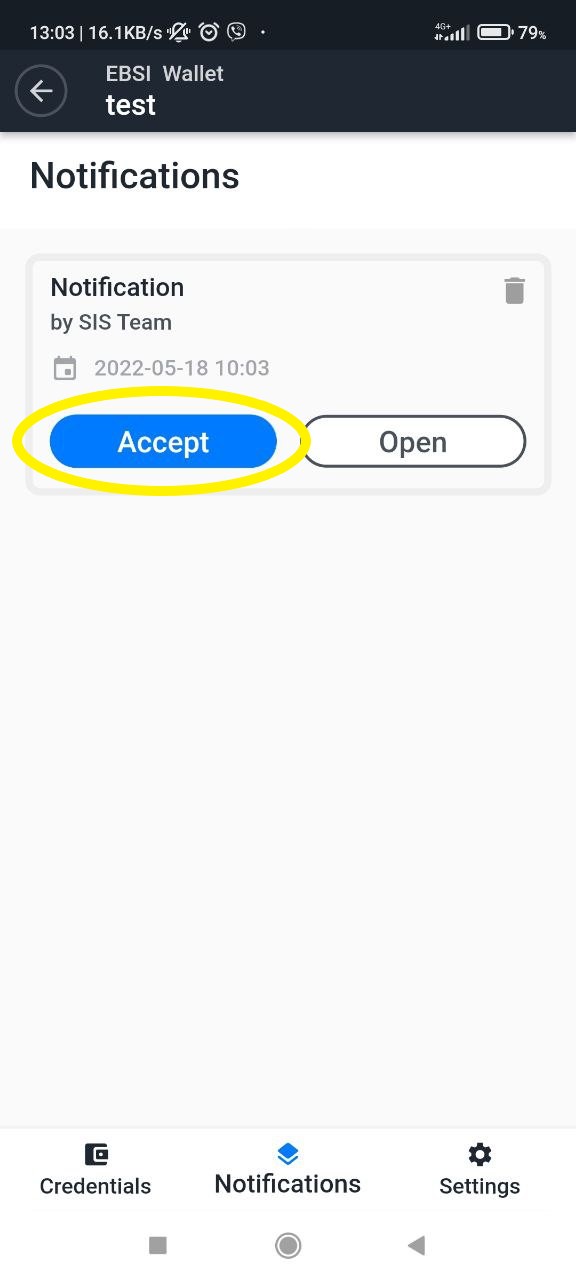
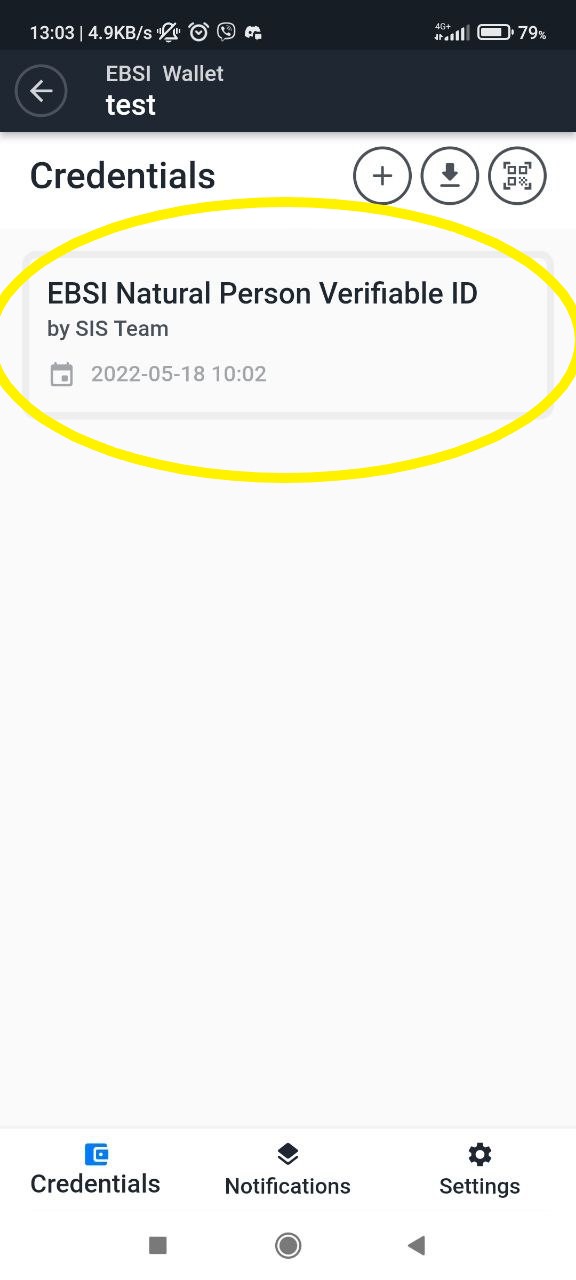
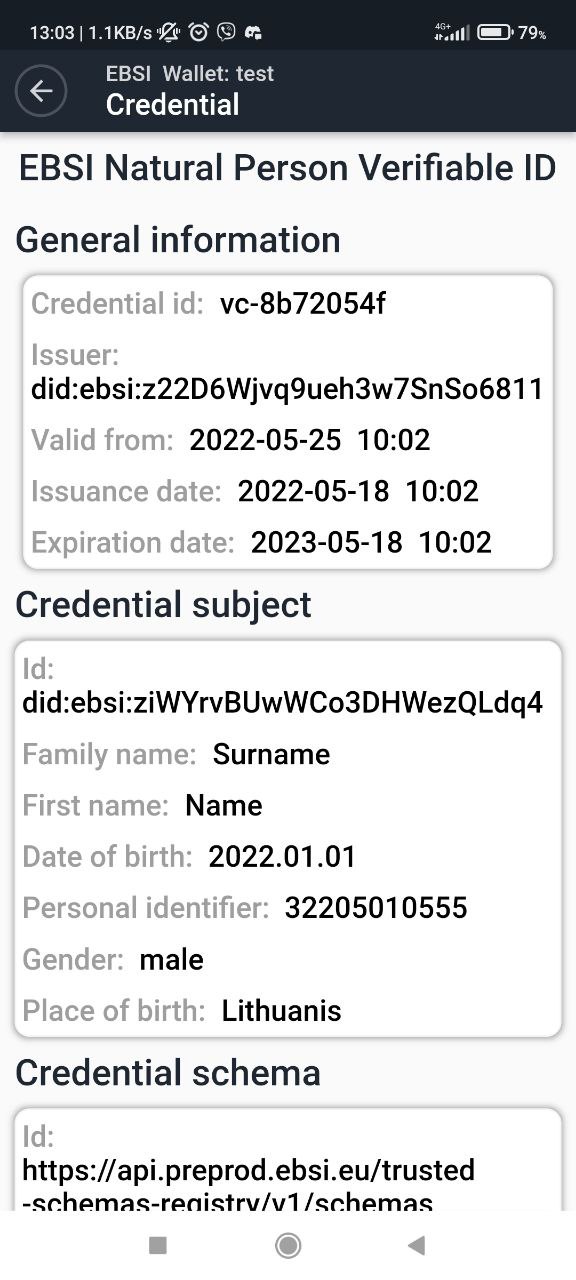
Go to https://ecmr.dev.cloud.chainrecord.net/ , "VP" and press "Login using Power of Attorney VP"

Get QR code :

Using your mobile wallet, scan the QR code.
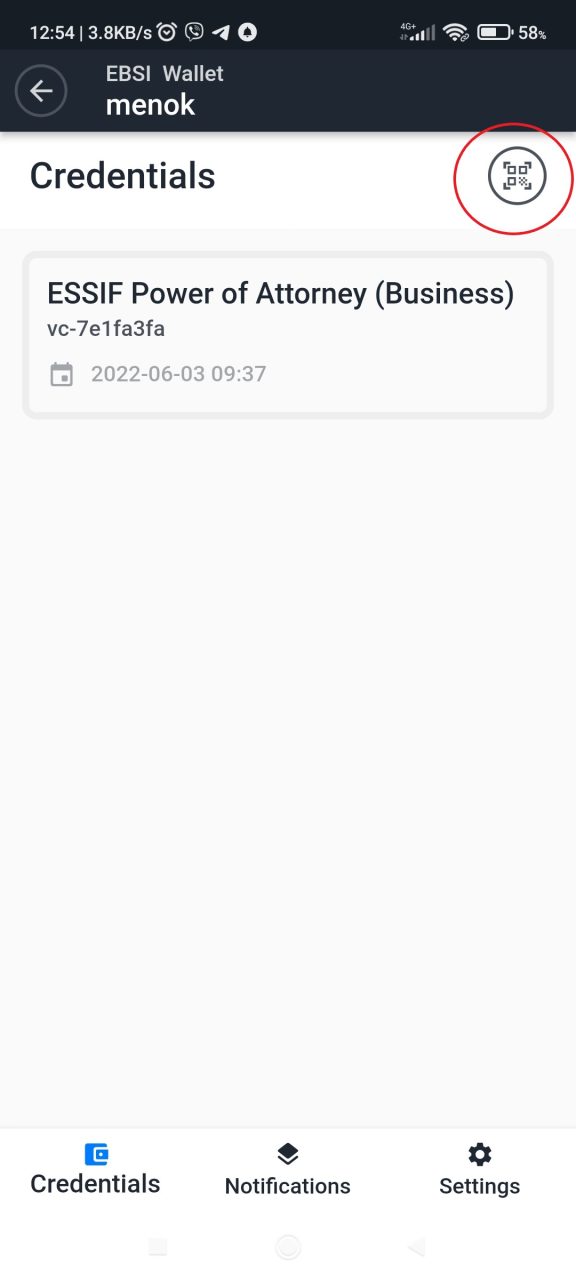
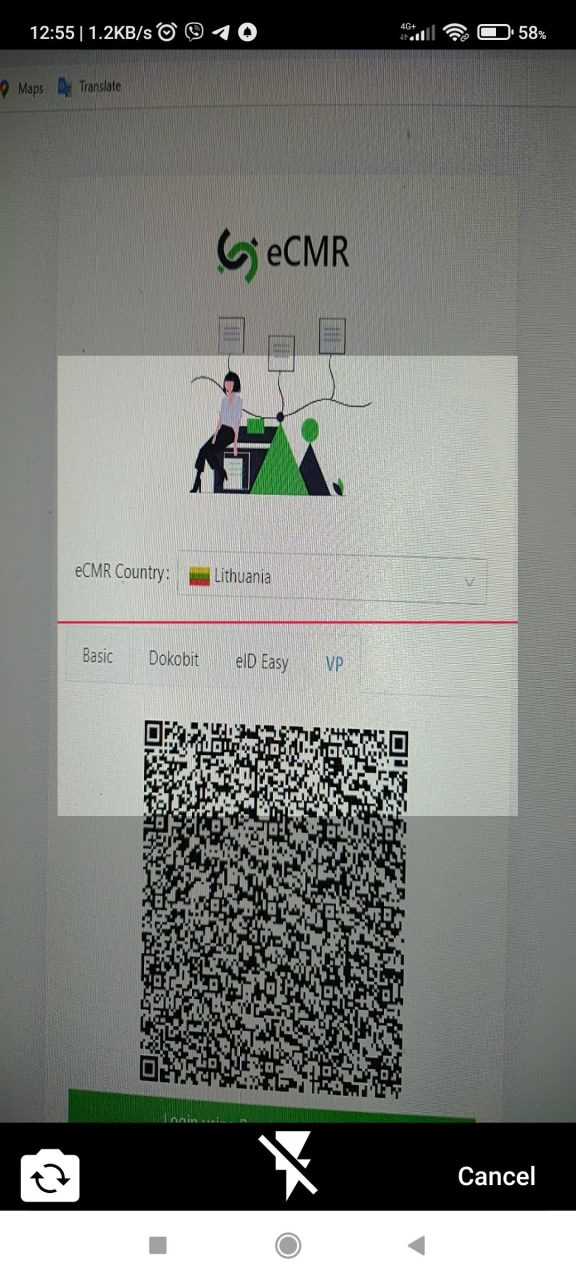
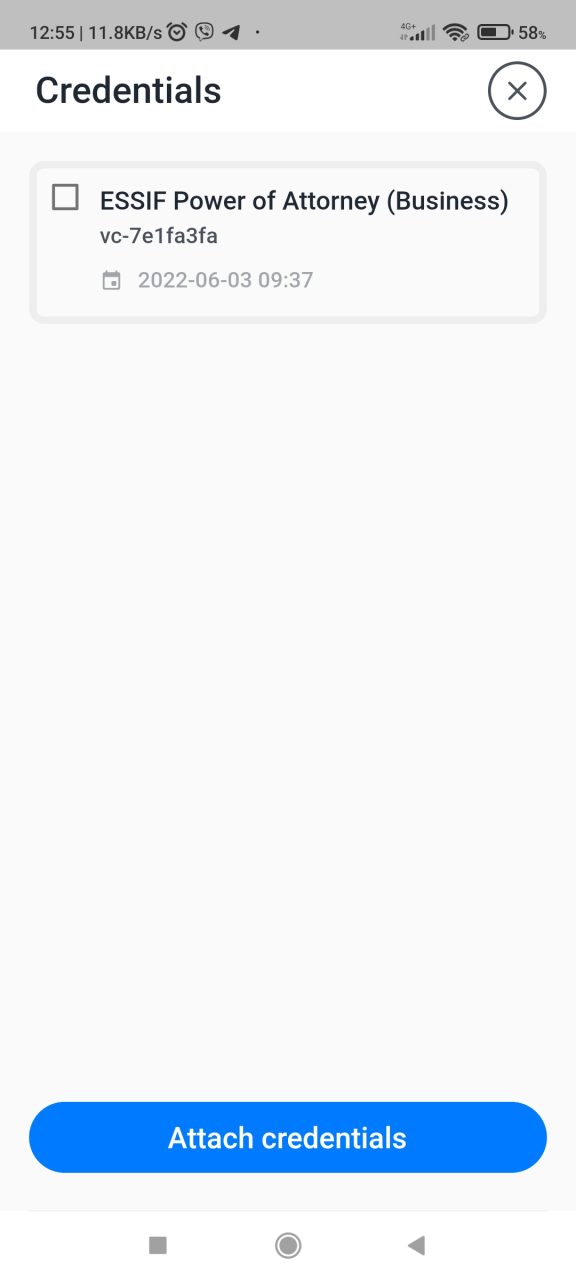
Attach credentials:
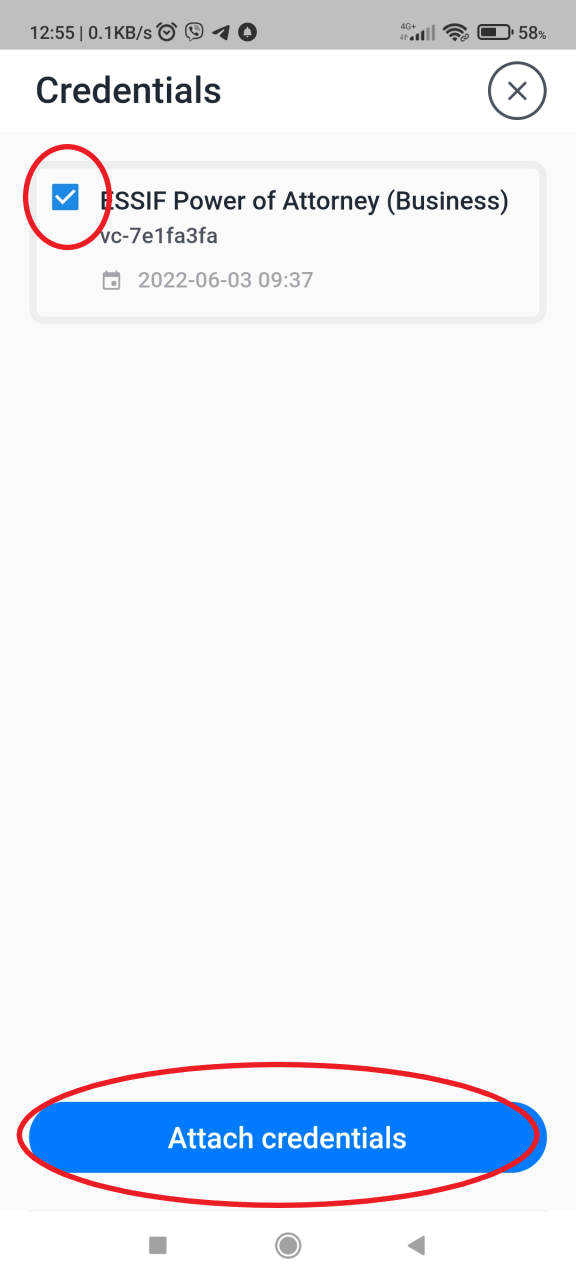
request credentials:
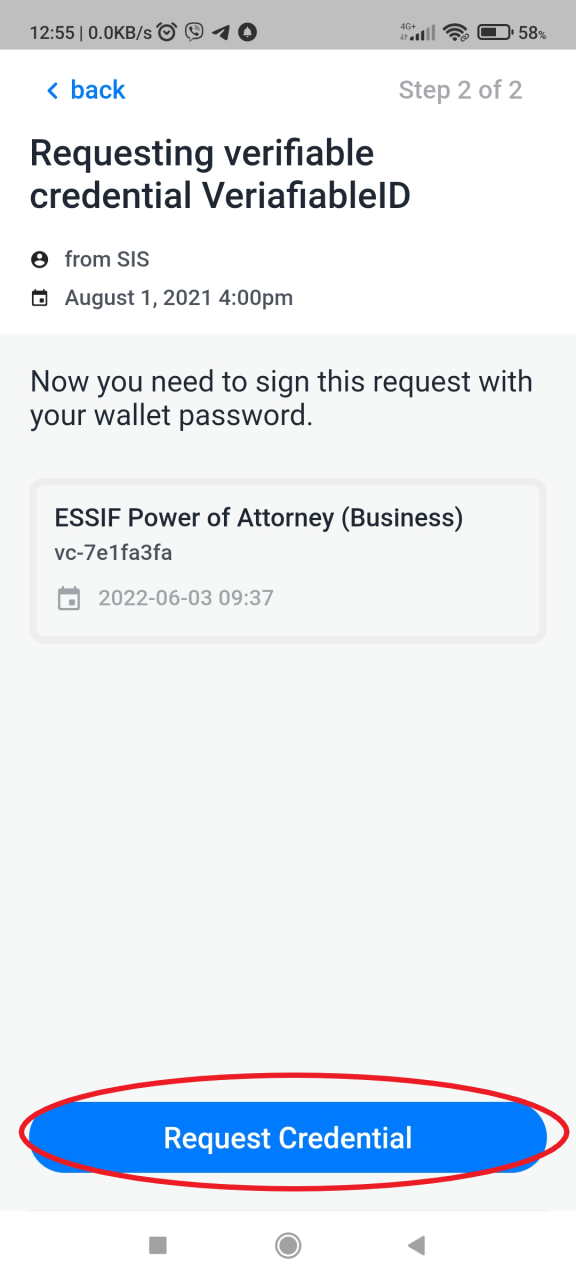
Then you'll be assigned to serve
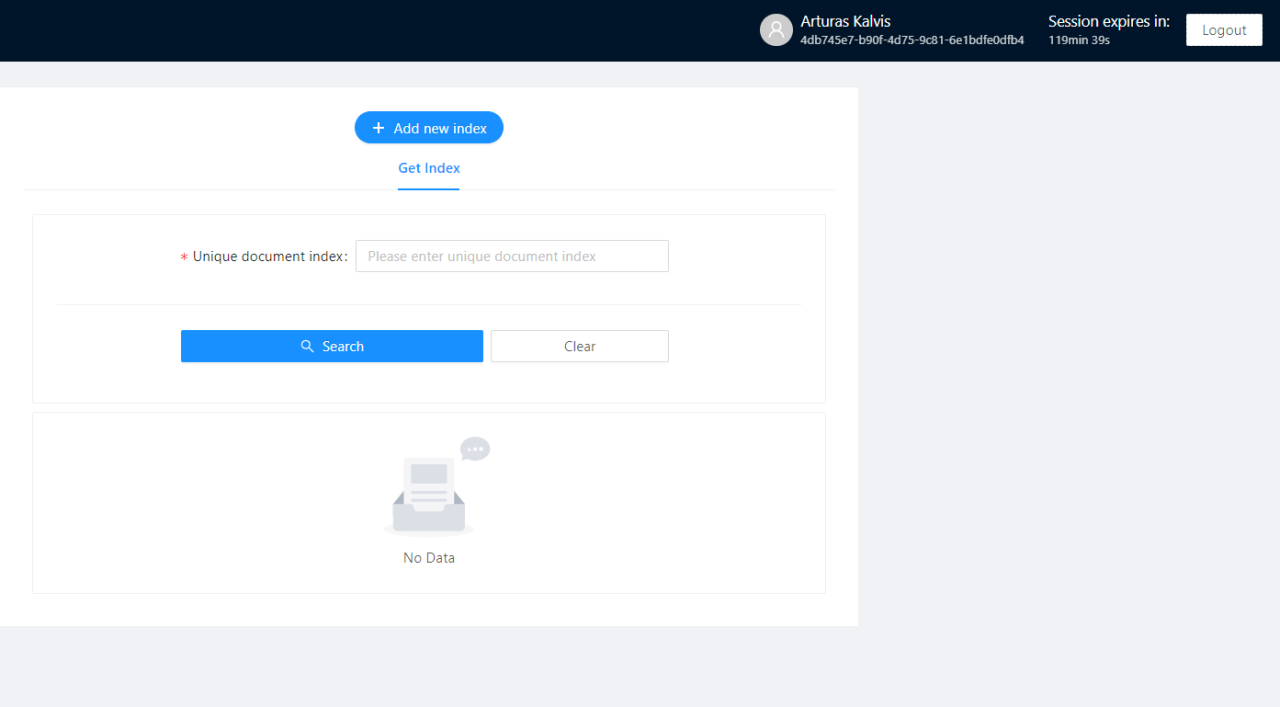
1. Download DTC client app - https://play.google.com/store/apps/details?id=lt.sis.dtc_client
2. Connect with government account :
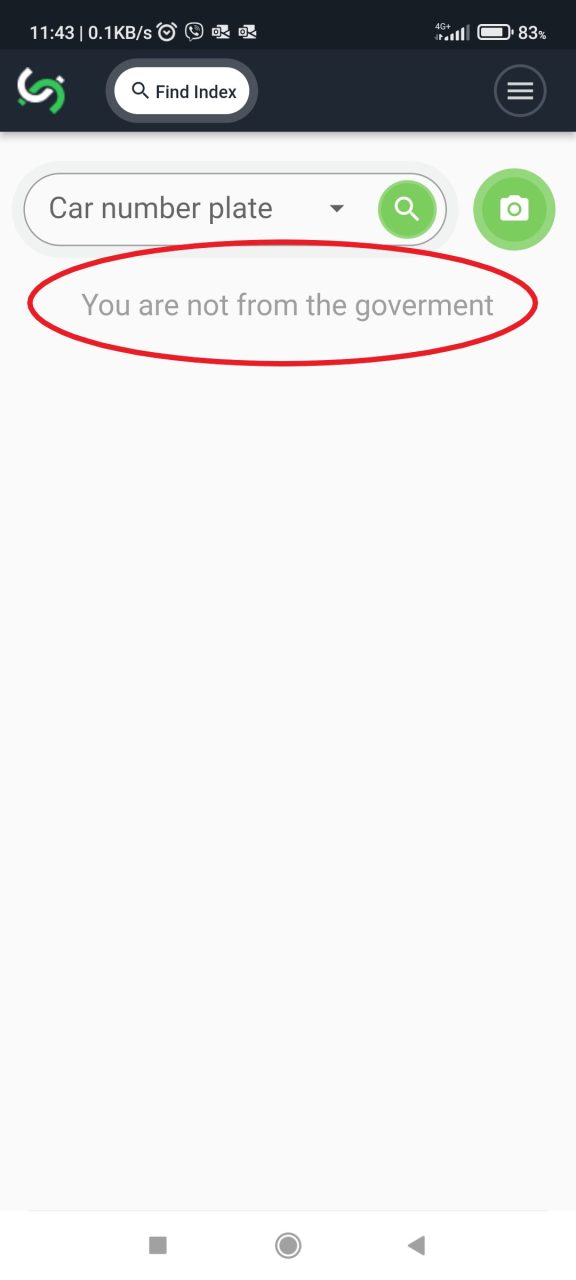
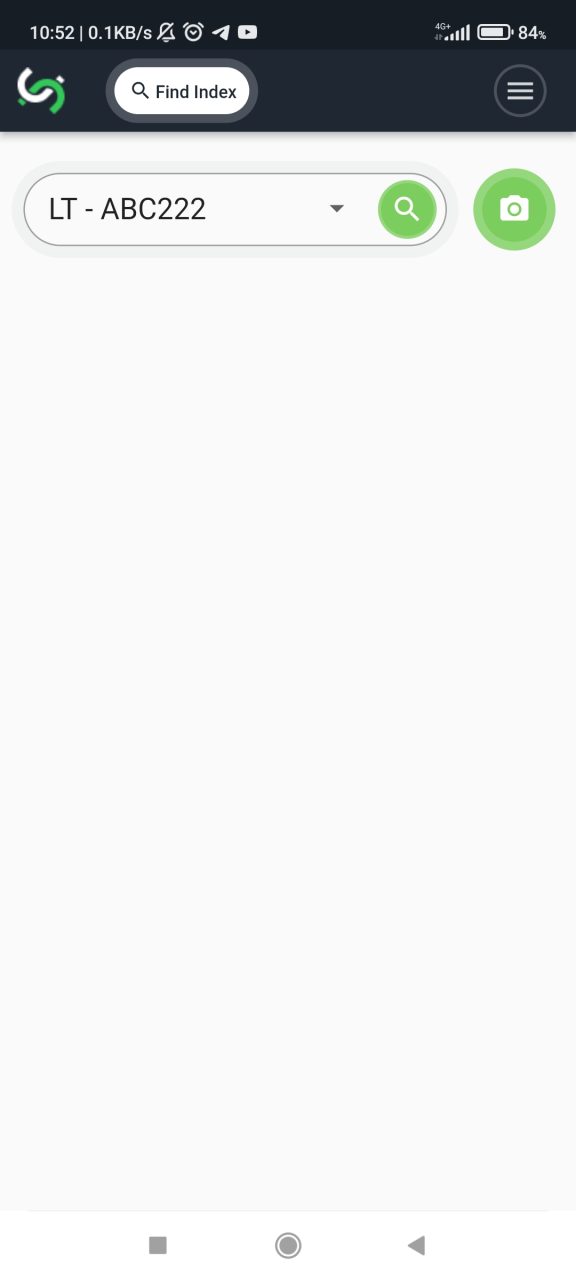
3. Take a photo of the vehicle's license plate number:
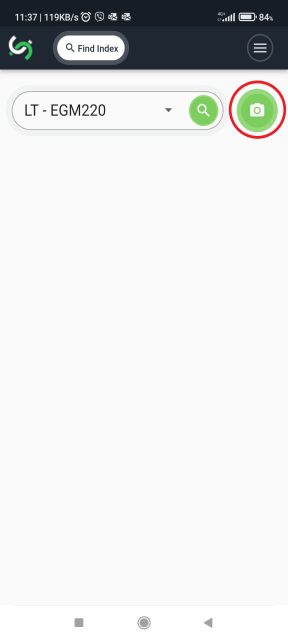
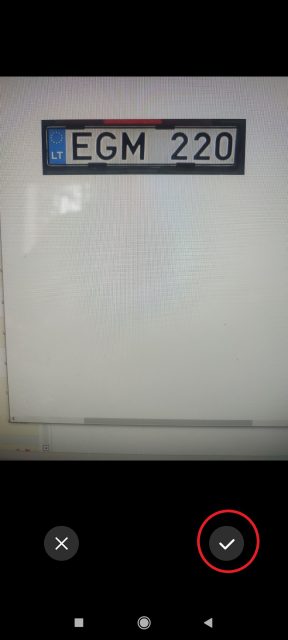
4. When you see the vehicle plate number in the little screen, press the search button.
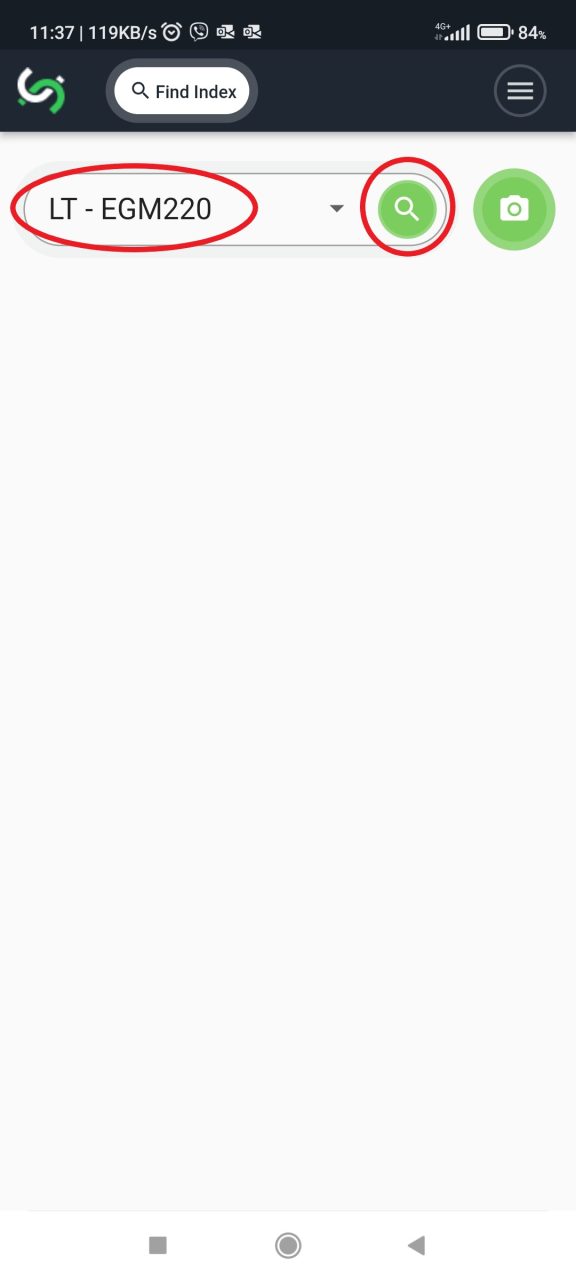
5. One or more documents will be connected with this vehicle number.
Just click on the document:
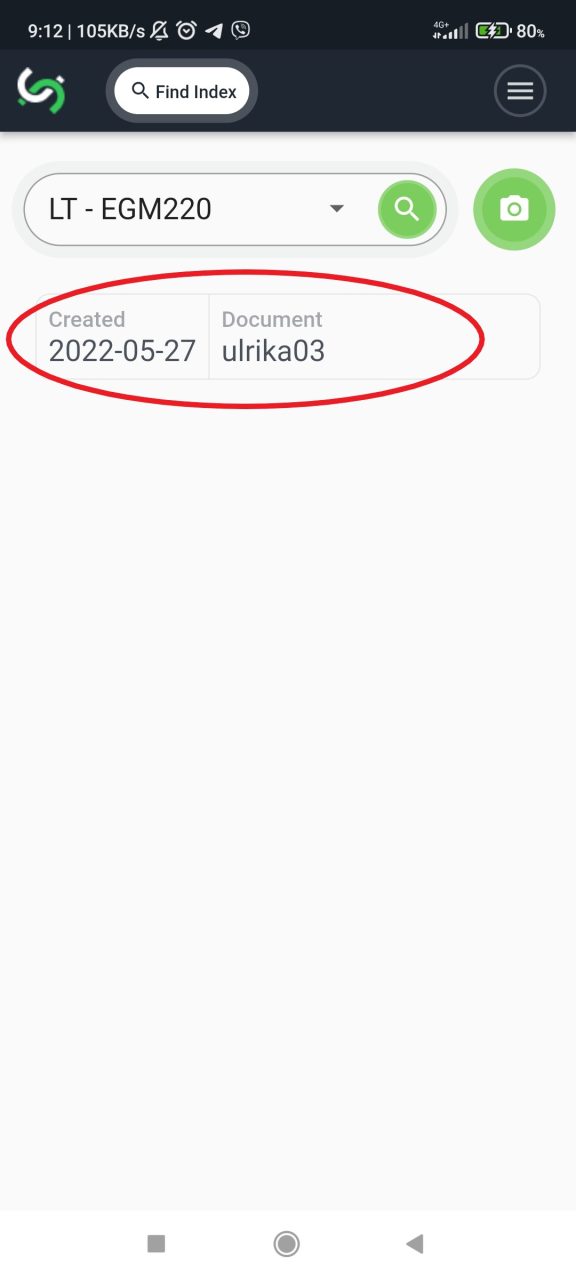
6. And you will see it :
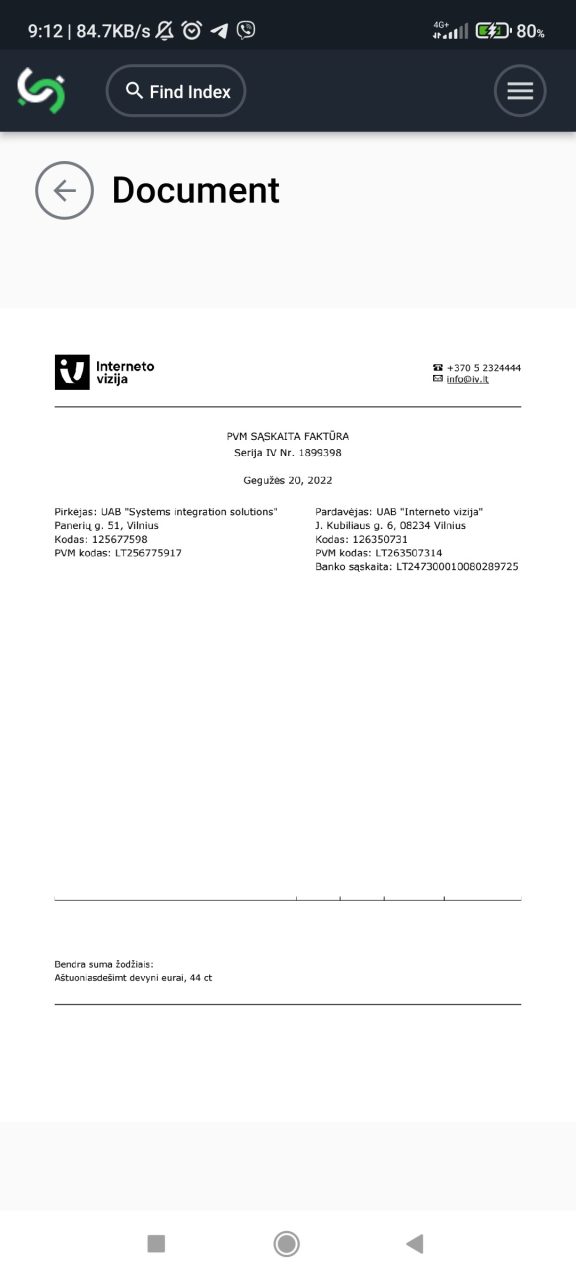
7. If yoif you want to go back, just press the back button:
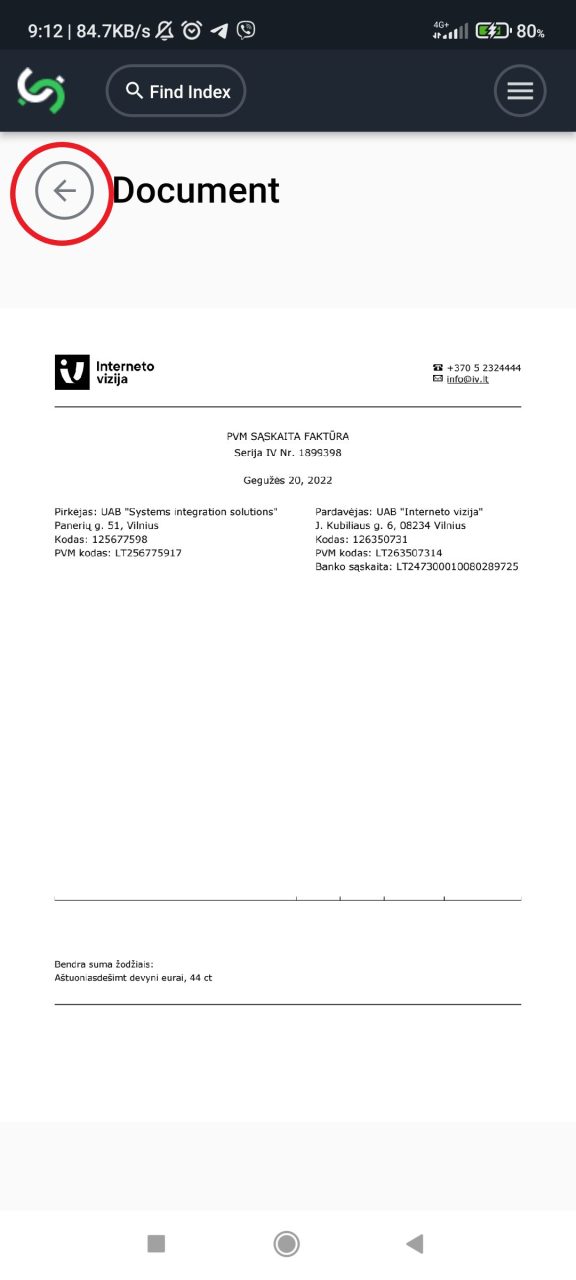
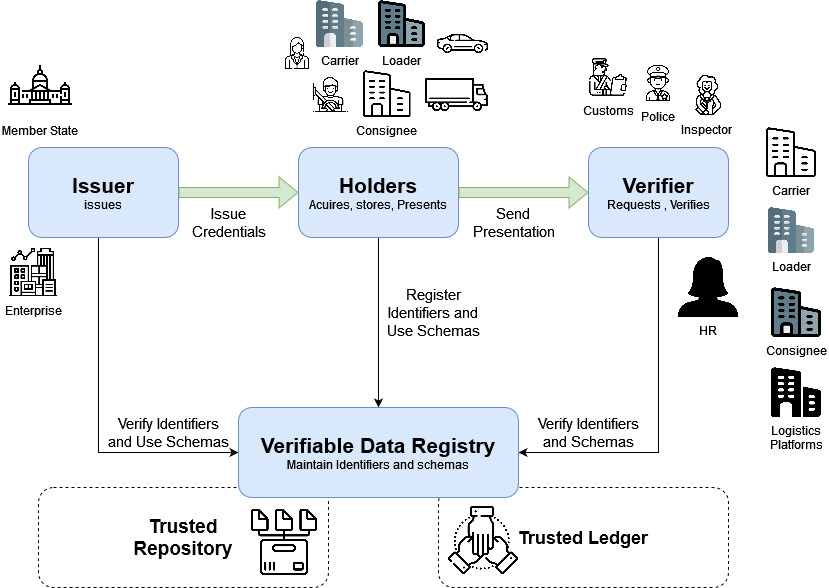
a) For user:
Contact your administrator to obtain user logins.
Create account using this link https://access.tst.gke.sis.lt/realms/essif.sis.lt/account

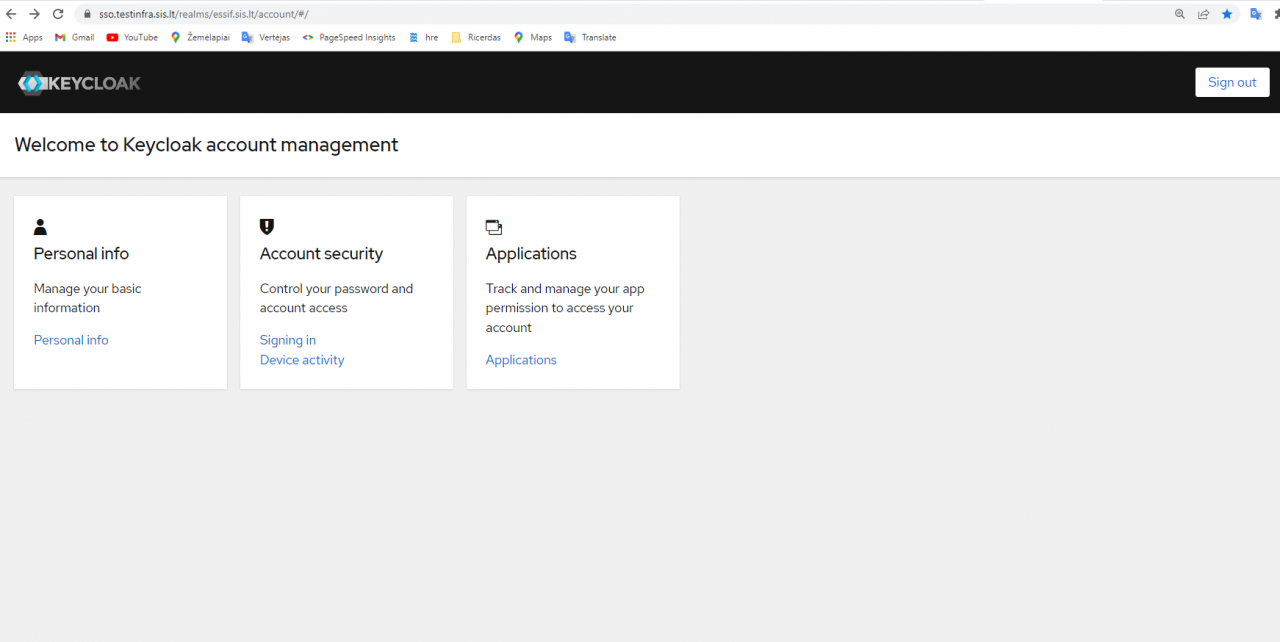
Contact your company's administrator to finish registration.
After your administrator finished your registration, login to essif.sis.lt user link https://issuer1.essif.sis.lt/login

Press "generate":
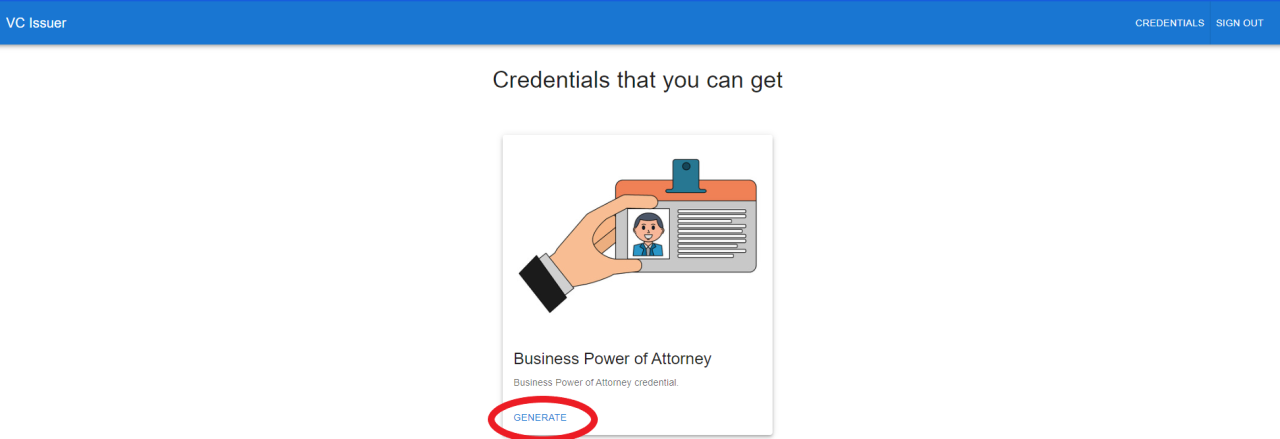
Choose evidence type and click NEXT:

a) eID evidence

b) internal evidence type

Get QR code and scan it with your wallet on mobile (if you don't have a wallet, follow instructions below)

push onboard with captha:

go to Mobile Wallet:

then we get QR code:

Next, open the mydid app on your phone and go to New Wallet:


Write Wallet Name and Create New Wallet.



We provide access to these credential type to people who have a wallet:
b) For administrator:
Select "users" and find required user:
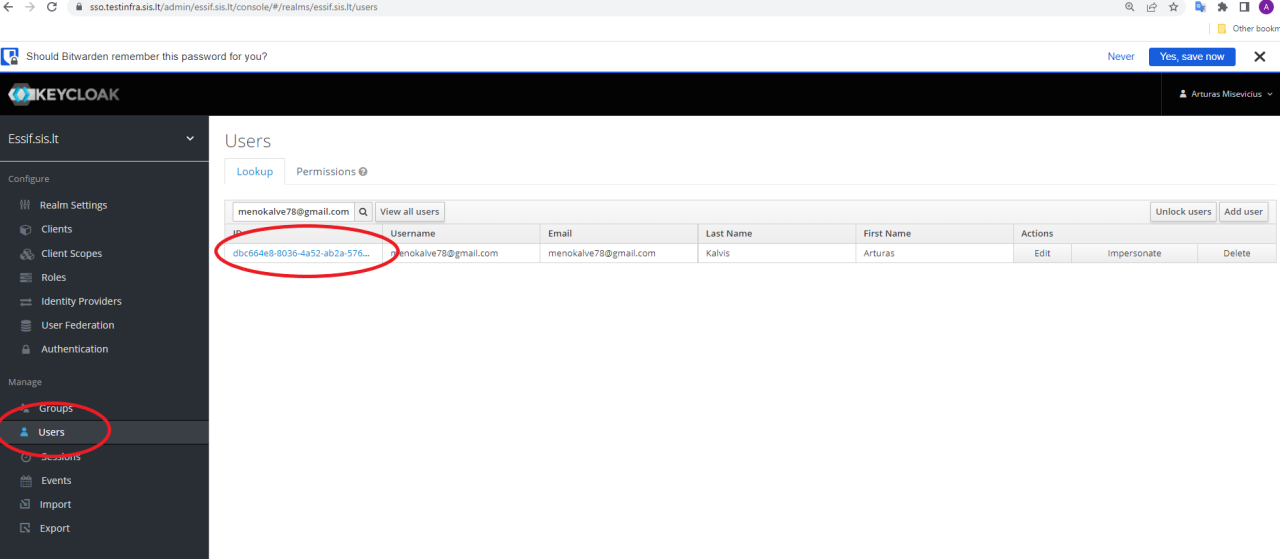
Make sure that the user is enabled and that email is verified:
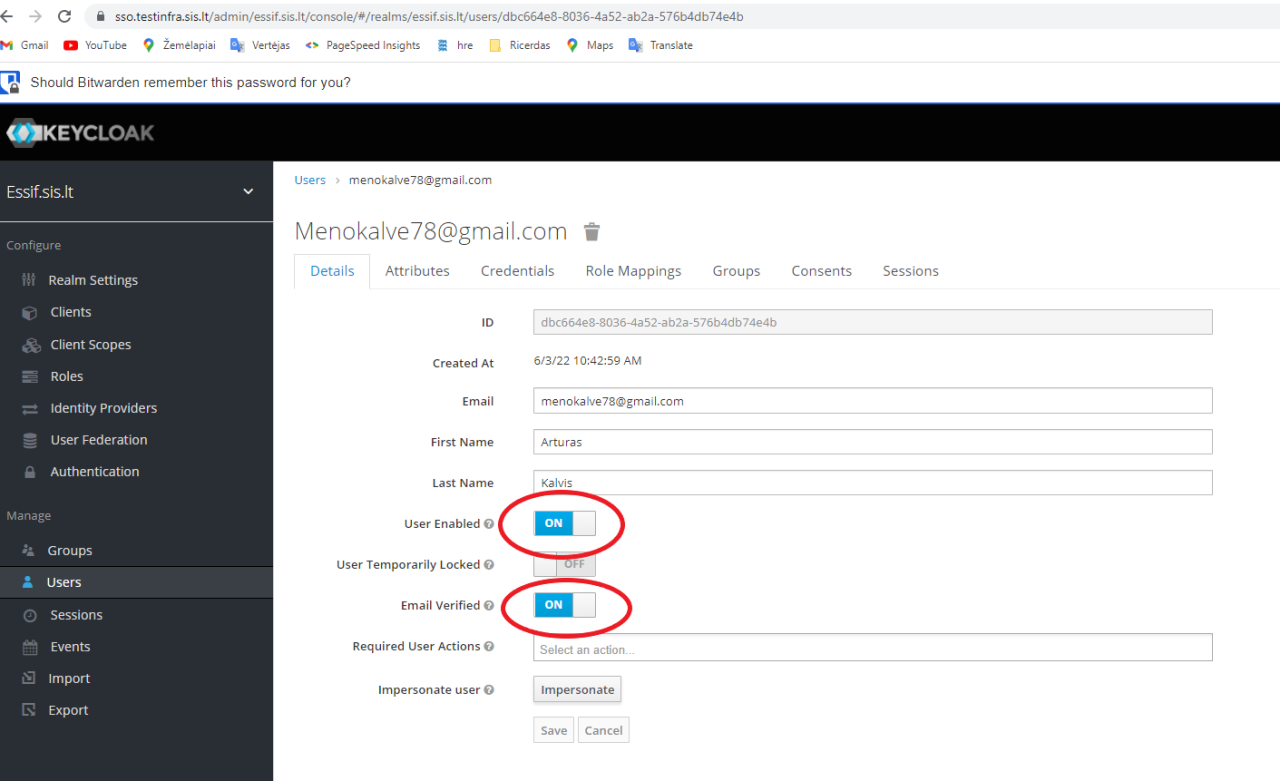
Select "Attributes" and fill in attributes as shown in the example and press "save"
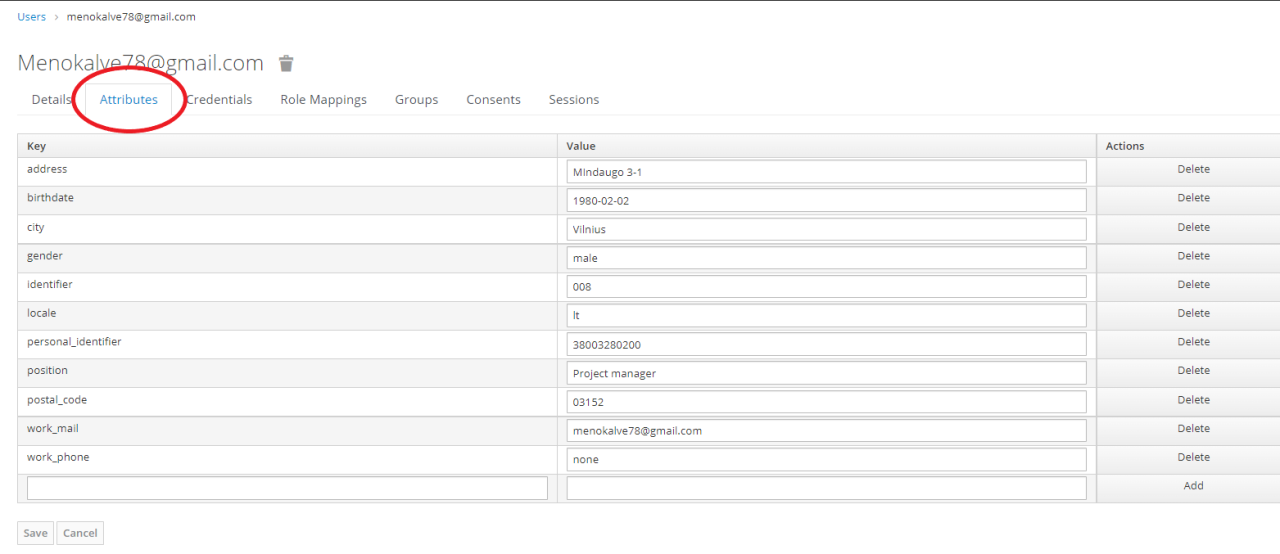
Join to groups :

“Technology is best when it brings people together”- Matt Mullenweg.
What is eCMR?
eCMR is a platform that works together with the transport and logistics sector. It aims to allow the service providers to index their active eCMRs and the controlling institutions to check the availability of CMR transport documents of the foreign road carriers driving through their territory in a secure and trustful way. With the indexing service and the indexing number of an eCMR, the appointed government institutions of the involved country would see where the eCMR is stored and receive agreed available data. To understand this solution better, here are five benefits which the solution gives:
How does it work?
The solution is based on an application programming interface (API) deployed using a distributed ledger technology (DLT) approach and platforms through API. It makes transport operations and eCMRs faster, simpler, and more efficient by providing digital services that allow all the supply chain stakeholders to exchange information smoothly and work better, closer together. However, the eCMR solution can only function when an internationally connected digital ecosystem is available, which would allow the data exchange on those documents along the transport corridor.
eCMR integration with EBSI
As mentioned before, eCMR is built on distributed ledger technology (DLT), another known as Blockchain technology that works closely with EBSI. Therefore, the main aim of eCMR integrating with EBSI would be to ease logistics.
EBSI: The European Blockchain Services Infrastructure (EBSI) network of dispersed nodes spread across Europe that uses blockchain technology to offer cross-border public services. And it suggests several use cases, and one of them might be integrated into eCMR.
SSI (self-sovereign identity) is one of the EBSI use cases that allow citizens and product users to charge their data. The SSI identification system enables users to utilise their digital wallets to verify their own identity using their credentials. As a result, they no longer must hand over ownership of their personal information to hundreds of databases each time you want to access new products or services, risking having their identity stolen.
How will it work? The company will issue a VC (verifiable credentials) to the user/driver, and they will have their wallet ready with their complete data. If the user/driver is required to share data cross-border, they will share only the data they want, for example, name, last name, and nationality. As well as with the help of eCMR, the customs officer will be able to see cargo goods in their system without a need for paper documents.
We are working with both projects separately, but there are plans to integrate them both, as mentioned above. So if you had any ideas whilst reading or want to be a part of the development, contact us by the form down below and let's talk!
X.509 is a format specification for public-key certificates. Public key certificates enable the connection of a public key to other data. By far, the most popular use is TLS/SSL, which serves as the foundation for confidence in HTTPS, the Web security standard. The certificate establishes a connection between a public key and a domain name via TLS (and perhaps other information).
For many individuals, the initial hurdle is deciding whether X.509 certificates are more closely related to verified credentials or DIDDocs. This makes sense since X.509 integrates the functionality of these two specific SSI standards. X.509 certificates, like DIDDocs, tie data to a public key. However, X.509's hierarchical public critical infrastructure (PKI) is intended to vouch for the validity of the X.509 certificate. Additionally, X.509 extensions enable the inclusion of additional information. As a result, X.509 certificates also associate the public key (as an identifier) with physical characteristics. DIDDocs lack a public key infrastructure (PKI). Rather than that, SSI relies on verified credentials to make a trustworthy assertion about a decentralized identity.
Another significant distinction between X.509 certificates and DIDDocs is that the DIDDoc's primary purpose is to associate the public key with a decentralized identifier, or DID, whereas X.509 certificates can associate the public key with a subject name and other information, such as a domain name. Certificate extensions enable the certificate to be used to link the public key to additional data. The critical difference is that the DID is needed and serves as a unique identifier for the DIDDoc; furthermore, the DID must be capable of resolving to the DIDDoc1. The DID adds a layer of concealment to the public key. As a result, the public key associated with a DID may be cycled without affecting the DID, making it a permanent identification. I won't go into depth about how this is accomplished safely, but you can read much more at The Architecture of Identity Systems if you're interested.
Therefore, why embark on a new endeavour? Several benefits of DIDs, DIDDocs and verified credentials over X.509 certificates include the following:
1. DIDs provide a higher level of security. DIDs enable the rotation of public keys securely. As a result, Alice may freely rotate the key underlying the DID without requiring new credentials. The identification exists for as long as Alice needs it. Alice will not be persuaded to retain a possibly compromised key out of concern for the inconvenience.
2. SSI employs the appropriate tools for each step of the process. The SSI design clearly distinguishes between identifying Alice and proving anything about Alice. Without depending on a hierarchical chain of authority, the binding between the DID and its associated public key may be validated cryptographically. The credential exchange's integrity may be confirmed cryptographically using data from a public credential registry (often a ledger of some sort). This division enables techniques and tools to be tailored to the specific requirements of each kind of document.
3. Verifiable credentials help to keep information private. Sharing just what has been required safeguards Alice's privacy. Daniel Hardman's Webinar on ZKP-based Credentials is an excellent, accessible explanation of the many advantages of ZKPs for credential sharing.
4. The SSI data sharing user interface is more secure. ZKPs benefit Alice by saving her time and decreasing the likelihood of her oversharing due to human mistakes (i.e. they are safer from a privacy perspective).
5. SSI has a uniform user interface. SSI wallets and agents provide an excellent user experience in maintaining connections, saving credentials, and responding to proof requests. As far as I am aware, X.509 certificate wallets do not exist in their current form; thus, they would need to be created to offer a similar user experience.
6. Credentials that are verifiable facilitate interoperability. Alice can utilize numerous credentials from various issuers and verify things to many verifiers due to standards, not just for data formats but also for issuer and presentation protocols. It is unaware of any criteria defining how X.509 credentials may be used to verify the kind of information in the mortgage example. They have been present for more than 40 years and are virtually solely used for TLS.
X.509 certificates have comparable high-level objectives as DIDs and verified credentials. However, DIDs and verified credentials constitute an innovation that incorporates 40 years of expertise and recent advances in cryptography to give a more robust, flexible answer to the issue of securely transferring data. The employment of SSI in DIDs and verified credentials enables the creation of a worldwide, interoperable data exchange metasystem that is cryptographically sound and provides a great user experience.
More you can find at https://www.windley.com/archives/2021/05/comparing_x509_certificates_with_ssi.shtml
The European Digital Identity will be available to EU citizens, residents, and businesses who want to identify themselves or confirm certain personal information. It can be used for both online and offline public and private services across the EU. Its function is to allow users to easily prove their identity for digitally signed messages, like a passport. It will become mandatory for airlines, banks, and telecom companies in all EU countries starting in 2020.
The use of digital identity is already widespread in many parts of the world. Many of these countries have taken on the initiative of digitizing official documents to advance their technological advancement and improve the ease and efficiency with which their citizens interact with each other. In addition, a study on digital identity by the World Economic Forum found that digitally authentic credentials are essential in today's global economy.
In 2007, the International Telecommunication Union (ITU) called for developing secure "universal digital identity" systems as a central element of its decade-long policy agenda. In 2009, following the ITU's request, the World Wide Web Consortium (W3C) published XRDS 1.0 as a first collaborative step to develop XML-based standards to secure universal digital identities.
Many countries allow or require digital identity services offered by the private sector, especially for online services. The private sector is often more capable of providing efficient and user-friendly solutions. The W3C maintains a list of all valid providers in its Universal Discovery Service directory.
In April 2014, India launched its "Digi-ID" service. This service allows citizens to identify and authenticate themselves using their mobile phones. The service includes storage of all personal information and is used in conjunction with national "e-KYC" services offered by banks and financial institutions. In addition, in November 2014, the US Federal Trade Commission released a report titled "The Future of Identity: Marketing and Consumer Identity." The report's stated goal was to provide consumers with the information they need to make informed decisions about their identities, privacy protection, and technology investments.
The European Committee for Standardization (CEN) created and published the European standard on electronic receipt (eReceipt) in response to a request from the European Commission. CEN is the organization that oversees the rights to European standards. An agreement between the European Commission and the European Standards Institute (CEN) was struck on December 18, 2018, granting open access to the first and second parts of the eReceipt standard:
• Semantic data model (SDM) is an abbreviation term (EN 16931-1: 2017).
• CEN/TS 16931-2: 2017 specifies the two syntaxes that are required.
Whenever derivative usage is permitted, the agreement grants unlimited access to the data model and compliance syntaxes for as long as the semantic data model and compatible syntaxes are maintained in their present state.
The following are some of the ways it will benefit the information technology industry:
The following are the advantages to the purchaser:
In addition, we would be saving paper, which would result in our needing less paper in the future. What are your thoughts? Please let us know your opinion.
On June 3rd, 2021, the European Commission presented a framework for a European Digital Identity available to all EU citizens, residents, and enterprises in the EU. With the touch of a button on their phone, citizens will be able to authenticate their identity and exchange electronic documents from their European Digital Identity wallets. Also, they will be able to access online services with their national digital identification, which will be recognised throughout Europe.
“The European digital identity will enable us to do in any Member State as we do at home without any extra cost and fewer hurdles. Be that renting a flat or opening a bank account outside of our home country. And do this in a way that is secure and transparent. So that we will decide how much information we wish to share about ourselves, with whom and for what purpose. This is a unique opportunity to take us all further into experiencing what it means to live in Europe and to be European.”- Margrethe Vestager, the Executive Vice-President for a Europe Fit for the Digital Age.
The European Digital Identity will be:
To reach this goal, the proposal was accompanied by a recommendation. The commission invites member states to create and implement a standard toolbox by September 2022. The European Commission asks to start necessary preparatory work immediately. This toolbox should include the technical architecture, standards and guidelines for best practices.
More information - https://ec.europa.eu/commission/presscorner/detail/en/ip_21_2663
We are thrilled and beyond proud of our CEO Rišardas Bedulskis which has joined an eFTI working group as InfoBalt chairman of the Digital Leadership Committee. eFTI is an electronic freight information working group that encourages freight digitization of transport and logistics. On the same note, let us look at one of our solutions related to logistics – eCMR.
As it was mentioned before, eCMR is a paperless solution for logistics. Its aim to allow the service providers to index their active eCMRs and the controlling institutions to check the availability of CMR transport documents of the foreign road carriers driving through their territory in a secure and trustful way. With the indexing service and the indexing number of an eCMR, the appointed government institutions of the involved country would be able to see where the eCMR is stored and receive agreed available data. To understand how good this solution is, here is five facts that will prove that we need eCMR:
The solution is based on an application programming interface (API) that was deployed using distributed ledger technology (DLT) approach and platforms through API. However, the eCMR solution can only function when an internationally connected digital ecosystem is available, which would allow the data exchange on those documents along the transport corridor.
Interested to know more about the solution? Contact us at [email protected] and we will consult you!
In today's world, each technology is getting better and better, and the only limit is the sky. Of course, the financial sector - no exception. The RTP has a messaging functionality. It is not a payment means or a payment instrument but a way to request a payment initiation.
The scheme can complement the payment flow because it supports the end-to-end process and lies between an underlying commercial transaction and the payment itself. An RTP as such is an enabler for digital payments. The investigation of the possibilities of request to pay began in 2018. In November 2018, EBA CLEARING launched a task force composed of experts from financial institutions across Europe to work on a blueprint for a pan-European request to pay infrastructure solution. The task force delivered a blueprint in early 2019 that set out a thin-layer infrastructure based on real-time messaging and separated from both end-user and payment infrastructure layers.
In 2020 Systems integration solutions, in collaboration with Vilnius business college, launched a project, Development of a Payment Platform Based on Innovative Technologies INO-PAY. This project aims to build up a platform based on DLT technology (another known as Blockchain), allowing you to pay easier and quicker.
So, how does it work? R2P service begins with the payer receiving a request via an electronic interface such as a mobile banking app. The payer will choose his payment: full price, half of the cost, or even an extension of his pay time. The choice which will payer make will be sent to the sender, and only in a few seconds, they will receive the money.
The project due is in 2023. We will update you on how the project is going! Stay tuned!
Harmonization of digital economies is one of the main policy objectives of the EU to bring positive benefits to people in the Eastern Partnership. EU funding in this region channelled through the EU4Digital Initiative, which puts together priority actions and programs in the sector. EU4Digital seeks to expand the Digital Single Market of the European Union to the Eastern Partner States to develop the digital economy and community's capacity to bring economic prosperity, create more jobs, better people's lives, and support enterprises.
Via the program, the EU is supporting the removal of roaming tariffs, the introduction of high-speed broadband to improve economies and extend e-services, organized cyber protection and the harmonization of digital systems across society, in areas ranging from logistics to health, improved skills and job growth in the digital sector. The EU4Digital project is working to extend the Digital Single Market's advantages between the EU and Eastern Europe through several projects to expand the digital economy, generate new opportunities in the community, support enterprises, and foster economic development.
Typically, Ukrainian firms use paper-based diplomatic arrangements to cooperate with other nations. In other terms, corporations use documents to register and support contracts with members of various companies. This method is time-consuming. One party signs and seals a paper agreement to achieve a consensus and sends a second paper contract via an international transport service to its business partner. Essentially, all parties first establish, accept and sign a contract in electronic format and then begin a long sequence of cross-border "transportation" of that document. There is also an alternative: one party is sent directly to the country of its business partner (by standard air or road transport) to retrieve the original text.
Main partners from the Baltic area were Systems integration solutions, UAB taking a step by step with the partners Ernst & Young Baltic UAB were creating a prototype which would help Eastern European countries to go paperless and step closer to the paperless world!
Every business owner spends round amounts on sheets of paper per year alone. For those sheets of paper on which everyday documents, statements, invoices are depicted. However, each sheet has its place, but what to do for those who have to carry them on a long-distance journey? 90 % of the private companies and associations indicate the non-acceptance of electronic transport documents by Member State authorities as a significant driver of the problem.
The objective of eCMR prototype was to create paperless logistics internationally. One of its aim was to allow service providers to check the availability of CMR transport documents of the foreign road carriers driving through their territory in a secure way.
The prototype was created between Baltic countries, Poland due to their thousands of shipments which are made daily accomponied by all the documents and public authorities. Not so long ago, CMR were only used in paper, which was time-consuming and costed a fortune. Luckily, trends in EU digitalized CMR and that is how eCMR was introduced.
The prototype development team contains DIGINNO, govermental organizations, logistic associations and much more. The project itself was guided by the Ministry Of Economics And Communications. Futhermore, the technical solution was provided by Fitek EDI (also known as Systems Integration Solutions)
The first testing of this digital road took place in August-September 2020 between Estonia, Latvia, Lithuania and Poland. Its main pupose was to prove benefits to all the parties through the practical experience and get a direct feedback which is important for further steps. Meanwhile is Lithuania the prototype is not used at the moment, but the eCMR document is recognized by Lithuanian law, but standarts for an international eCMR record is not established yet.
As a result, we save time, costs, and protect nature itself. If the whole European Union were to unite, we would save 900,000 trees a year if we would use paperless solution just like eCMR.
In today’s world, each technology is getting better and better, and the only limit is the sky. Of course, the financial sector – no exception. The RTP has a messaging functionality. It is not a payment means or a payment instrument but a way to request a payment initiation.
The scheme can complement the payment flow because it supports the end-to-end process and lies between an underlying commercial transaction and the payment itself. An RTP as such is an enabler for digital payments. The investigation of the possibilities of request to pay began in 2018. In November 2018, EBA CLEARING launched a task force composed of experts from financial institutions across Europe to work on a blueprint for a pan-European request to pay infrastructure solution. The task force delivered a blueprint in early 2019 that set out a thin-layer infrastructure based on real-time messaging and separated from both end-user and payment infrastructure layers.
In 2020 Systems integration solutions, in collaboration with Vilnius business college, launched a project, Development of a Payment Platform Based on Innovative Technologies INO-PAY. This project aims to build up a platform based on DLT technology (another known as Blockchain), allowing you to pay easier and quicker.
So, how does it work? R2P service begins with the payer receiving a request via an electronic interface such as a mobile banking app. The payer will choose his payment: full price, half of the cost, or even an extension of his pay time. The choice which will payer make will be sent to the sender, and only in a few seconds, they will receive the money.
The project due is in 2023. We will update you on how the project is going! Stay tuned!
On 2020 June 17 we participated in the meeting of the Working Group on the Digitization of Road Freight Transfers by Road (CMR), where we presented the scope of the DIGINNO-Proto eCMR pilot project in the Baltic Sea countries – the creation of an eCMR indexing/registers whether a legal and reliable eCMR exists and in which country it will be stored. The pilot project will involve logistics companies, carriers and responsible institutions from Lithuania, Latvia, Estonia and Poland. At the meeting, we discussed Lithuania’s involvement in pilot testing.
We also informed the participants about the eFTI regulation (EU regulation on electronic freight information). The regulation obliges the Member States to adopt e-mail freight information through a certified national platform. Over the next 2.5 years, The European Commission will need to develop technical specifications for the functional requirements of eFTI platforms and rules for data transmission, processing and protection, among others. The EU state regulation will have to be implemented by 2025 August.
You can find more about the DIGINNO-Proto eCMR pilot development project in a previous article: Presentation of eCMR prototype development using Blockchain technology in a virtual conference.
During a virtual event held on 9 December, the EU4Digital Facility proposed its eDelivery pilot for cross-border sharing of invoice data between Ukraine and Poland
First of all, Blockchain is a specific type of database. To understand it better we should define what is a database in general. A database is an organized collection of data that is stored electronically on a computer system. Information, or data, in databases is typically structured in table format to allow for easier searching and filtering for specific information.
The case, which provided a realistic look at the eDelivery pilot, was presented by EU4Digital Facility Deputy Team Leader Ruta Salvyte-Tamosiuniene, enabling the participants to imagine step by step how electronic invoices are shared through the eDelivery solution. The mechanism between two pilot countries, Ukraine and Poland, was discussed by EU4Digital senior experts Jonas Zalinkevicius and Risardas Bedulskis.
The eDelivery pilot was launched between Ukraine and Poland on 9 October, when uniform invoice data were successfully shared between four pre-selected importing and exporting companies.
The EU4Digital Facility has recently launched preparatory exercises to evaluate the inter-EaP scenario for eDelivery with Armenia and Ukraine, to pilot the functioning of the solution in the region. After a month of operation, Karen Martirosyan of the Armenian State Revenue Committee said that they also saw significant scope for the possible introduction of eDelivery for cross-border data sharing.
The pilot activity will be followed by recommendations from the EU4Digital Facility, focused on two main priorities: 1) rollout and scale – i.e., how countries can migrate from the test environment to full use of eDelivery; and 2) learn and reuse – i.e. how other Eastern partner countries could benefit from this pilot and adopt the same solution.
Virtual Innovation Network virtual conference took place on 2002 June, in which Fitek EDI team presented the supervising eCMR prototype. The event focused on the project activities developing the electronic consignment note (eCMR) and Know Your Customer (KYC).
Inna Nosach from the Estonian Ministry of Economic Affairs and Communications presented the prototyping process from the perspective of DIGINNO-Proto at the event, introduced the audience to the challenges and plans related to the digitization of the logistics process in Europe. You can view her presentation here.
Fitek EDI representative Greta Gelgotaitė presented the progress of prototype development, DLT technology, which is used to create the prototype. Emphasizing that the prototype is, in fact, an eCMR index registry system: a system for exchanging information in the public part of a CMR document between different countries, she presented the principles of how the prototype works. After the presentation, the company’s director Rišardas Bedulskis answered the conference participants’ questions about the development of the prototype, the technology used and the next steps. You can view the presentation here.
The Fitek EDI team together with partners in the DIGINNO-Proto project has won a public procurement tender and since 2020 April develops eCMR prototype for testing between four countries: Estonia, Latvia, Lithuania and Poland. Experts from Intepia OÜ (Estonia), Bunasta Group (Lithuania, Latvia, Poland), PPL 33-35 Ltd. work in the partner team together with Fitek EDI specialists. (Ukraine). With a large international group, we are pleased with the smooth and quality piece of creating the prototype.
UAB System integration solutions changed its name to UAB Fitek EDI. The name is being modified by successfully implementing the integration process between companies, which started at the beginning of 2018 when UAB Fitek LT acquired a controlling stake in SIS.
“In the year and a half since the acquisition of SIS, we have expanded our portfolio of services and created unique solutions based on the good experience and competencies of both companies. By concentrating services under the common Fitek brand, we will be able to provide information to customers more clearly and improve their experience,” says Audrius Kirklys, General Manager of UAB Fitek LT. According to him, by combining the SIS Electronic Data Interchange (EDI) system and Fitek LT document digitization services, companies have access to highly efficient account management solutions. “Documents, regardless of their presentation and format – electronic, paper or PDF – are digitized, and their data automatically travels to the client’s accounting or business management systems. In this way, the probability of manual work and errors decreases, and processes become faster and more transparent,” says A. Kirklys.
In addition to electronic data exchange, the companies’ service portfolio includes the automated purchase account management platform FitekIn, sales invoicing solutions through various channels, e. archive creation, data conversion and uploading services to the STI i.MAS and other systems administered by state institutions.
Fitek LT and SIS customers include retail, gas station networks, banks, telecommunications, utilities, insurance logistics, manufacturing companies, hotels, restaurants and other organizations operating in the Baltic States that need to manage financial document flows effectively.
Due to the name change, the terms of service for existing UAB System integration solutions will not change. UAB Fitek EDI will continue all contractual obligations.
About Fitek LT :
Fitek LT has been operating in Lithuania since 1998. company revenue in 2018 amounted to 4.854 million. Eur, net profit in 2018 amounted to 254,000 Eur.
From the 2nd of April 2019, Fitek LT is part of the UnifiedPost Group of financial technology companies based in Belgium.
The Ministry of Economy and Innovation, the Customs Department, the State Tax Inspectorate, the Lithuanian Transport Safety Administration (from now on – LTSA), the National Information and Communication Technology Sector Association “Infobalt” and the Lithuanian National Road Carriers Association “Linava” have signed a memorandum on digitalization of cross-border freight transport.
According to the Ministry of Economic and Innovation, this project aims to enable businesses to optimize processes and integrate activities into a shared information system network. This initiative stemmed from the Digital Innovation Network (DIGINNO) project, which aims to promote the digital economy and accelerate the single market’s completion in the Baltic Sea Region.
In The Bank of Lithuania’s blockchain-based LBChain Systems integration solutions, UAB is testing SmartContract prototype for factoring process management, linking buyer, a seller, factoring companies and banking systems a single process. In the future, it is planned to connect the EU standards (Building Blocks), eDelivery and eInvoicing.
More: https://www.lb.lt/en/news/lbchain-project-six-financial-products-already-being-tested
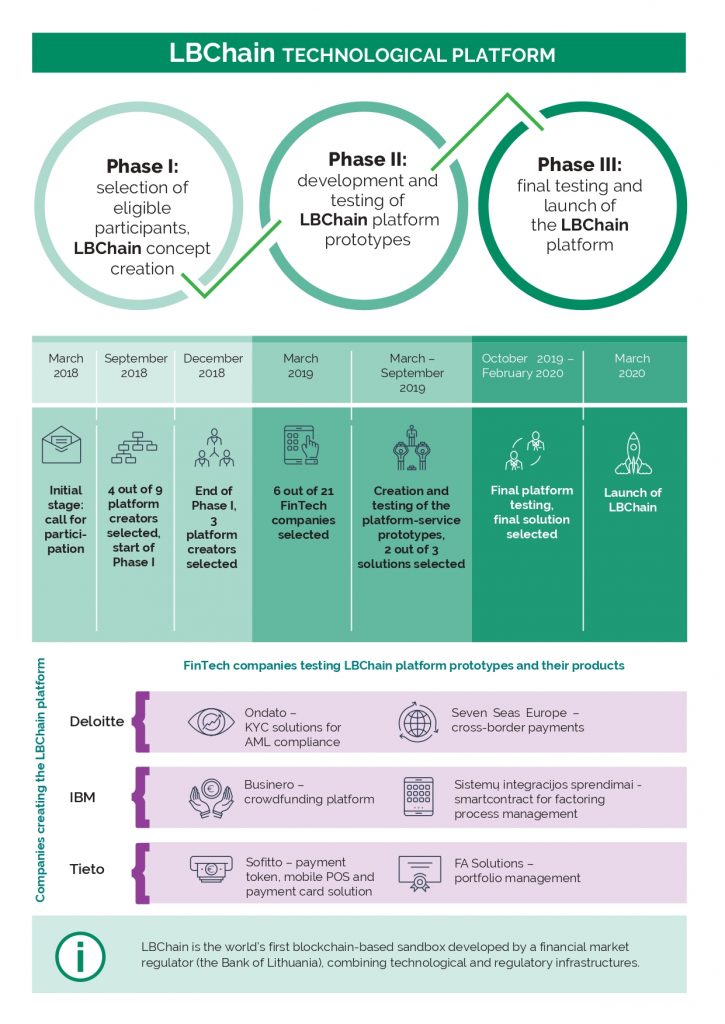
System integrations solutions, UAB are a member of the European EDI network EEDIN. This network unites companies providing EDI services from different European countries. Ideas and goals of the EEDIN network:
Systems integration solutions, UAB, together with “Skaitos kompiuterių services”, started the implementation of the project” Development of Document Transaction Management Algorithm Model for Distributed Systems (SmartContract)” (project No. J05-LVPA-K-04-01050). For this Project European Union Regional Development Fund under the European Union Funds Investment Action Program 2014-2020 Operational Program Measure 01.2.1-LVPA-K-828 “Intelligence. Joint Science-Business Projects” was granted EU support of up to EUR 184 344.78.
The project essence is to create an algorithm which will manage document transaction for Distributed systems (SmartContract). This solution would provide technical capabilities to system manufacturers in an easy way to link data/documents produced by their software with cryptographic algorithms on a Distributed Ledger Technology (DLT) platform and to be able to read and verify information, which is already registered on the DLT platform. Integration of business processes with decentralised digitalisation technologies is a new and uncertain technological branch. Therefore, a systematic analysis of the use of DLT technology for business environment processes is required.
The international electronic consignment note (eCMR) project initiated and coordinated by the Lithuanian Information and Communication Technology (ICT) Association Infobalt has entered the system prototype development stage – Lithuanian document digitization and automation solution companies. Fitek EDI, a consortium of partners from several countries, has won an international tender to develop a prototype of an electronic consignment note platform for cross-border road haulage.
This prototype will be the first step in digitizing the exchange of bills lading between different countries, their institutions, actors in the logistics chain and service providers. Electronic waybills will eliminate paper documents and help market participants save time and financial resources while ensuring better control of the logistics process.
In the summer of 2019, representatives of the Lithuanian public and private sectors signed a memorandum of cooperation on the digitization of cross-border road haulage using a cross-border electronic consignment note Baltic and Northern European countries, which both business and state institutions could use.
“The electronic consignment note is recognized as the second most important EU standard, after the entry into force of the electronic invoice, which helps to reduce the shadow economy. Both form the basis for creating a single EU digital market for goods and services, says Rišardas Bedulskis, Director of Fitek EDI.
The introduction of cross-border electronic consignment notes will save administrative costs, protect data by technological means, ensure transparency and accuracy, control and monitoring the delivery of goods. It will be possible to submit and exchange data in real-time. “
A consortium of Lithuanian Fitek EDI and its partners from Latvia, Estonia, Poland and Ukraine has proposed an innovative solution based on Distributed Ledger Technology (DLT), ensuring security, traceability, irreplaceability and transparency of the transmitted data.
The platform’s prototype is planned to be developed and tested between the three Baltic countries this autumn. The necessary legislation will then be initiated to make the electronic consignment note platform available to the logistics sector in all countries involved in the project.
“We plan to launch similar pilot e-waybill projects with these countries, probably by connecting them to the platform which is being developed by the Fitek EDI consortium,” said R. Šatrovaitė, Digital Policy Manager at Infobalt. “There is also an opportunity to expand not only the geographical scope but also other transport sectors: maritime, air, rail.”
Digital Innovation Network (DIGINNO) launched the e-waybill initiative as part of the international project, which aims to promote the digital economy and accelerate the single market development in the Baltic Sea Region. In addition to Lithuania, Poland, Latvia, Estonia, Norway, Denmark, and Finland joined this initiative.
At the political level of implementing the electronic consignment note, the initiative was demonstrated by the Estonian Ministry of Economic and Innovation, which organized a competition to create a prototype.
As previously announced, Systems integration solutions, UAB, and partners are implementing the “eDeliveryLT” project. The project is successfully developing, so we provide a bit more information about it:
Problem. By 2017, Lithuania was one of the few EU members states 2017 without access to the EU platform for essential services in the EU’s single digital services infrastructure, thus excluding cross-border digital services.
Meanwhile, Lithuanian business with the institutions, economic entities and citizens of the EU is changing daily in large volumes of documents. However, it practically cannot send and receive these electronic documents in an interactive, secure, reliable and legally recognized way. Such a cross-border exchange of electronic records is facilitated by the electronic delivery of digital services block (building blocks).
Opportunities. The EU encourages the EU Member States to engage in the development and use of cross-border digital services, providing Member States with access to EU trans-European networks and providing financial support for developing such services through projects of common interest. The Connecting Europe Facility (CEF) is the main instrument for delivering EU financial support for trans-European networks and building blocks for building digital services from now on “digital service blocks”), such as electronic delivery eDelivery, eInvoicing, eID, eSignature, eHealth, eTranslation.
The Project. Seeking to set up eDelivery in Lithuania, the European Commission has provided financial support from the CEF to implement the project “delivery” (Project No 2016-LT-IA-0080, Contract No. INEA / CEF / ICT / A2016 / 1284783).
The project value is 248.810 Eur, the partners’ contribution to the project is 62.202,5 Eur.
Duration of the project – 2 years: starting on 2017-04-01, the project’s expected end is 2019-04-01, the beginning of the electronic delivery service is scheduled to be 09/01/2018.
Partners. The project “eDeliveryLT” is being implemented by “Infobalt” (Coordinator) together with partners – Systems integration solutions, UAB, UAB “Skaitos kompiuterių services” and Public institution “eDeliveryLT”. The latter is responsible for the further support and development of electronic delivery.
The project aims to create an Access Point with Service Metadata Publisher (SMP) for cross-border exchange of electronic documents and test this access point’s operation for one year. This will enable the Lithuanian business entities to exchange electronic documents both at the same time and at the EU level.
For eDelivery, “eDelivery LT” intends to use the B2A (Business Institutions) script, approved by the PEPPOL organization and compatible with the B2B (business-to-business) script. Compliance with the requirements for electronic identification and electronic transactions ensures legal certainty and reliability in the cross-border transmission of electronic documents, while the interface with the Digital Service Infrastructure (DSI) provides secure and convenient document transactions.
The Electronic money delivery will enable interoperability at the EU level and among the EU Member States, regardless of which standards are used in each EU country.
Also, by creating electronic delivery in Lithuania, as one of the EU Common Market and the Schengen area, it can be expanded beyond the EU, particularly in the EU Eastern Partnership countries, from where large flows of transport, goods and services come.